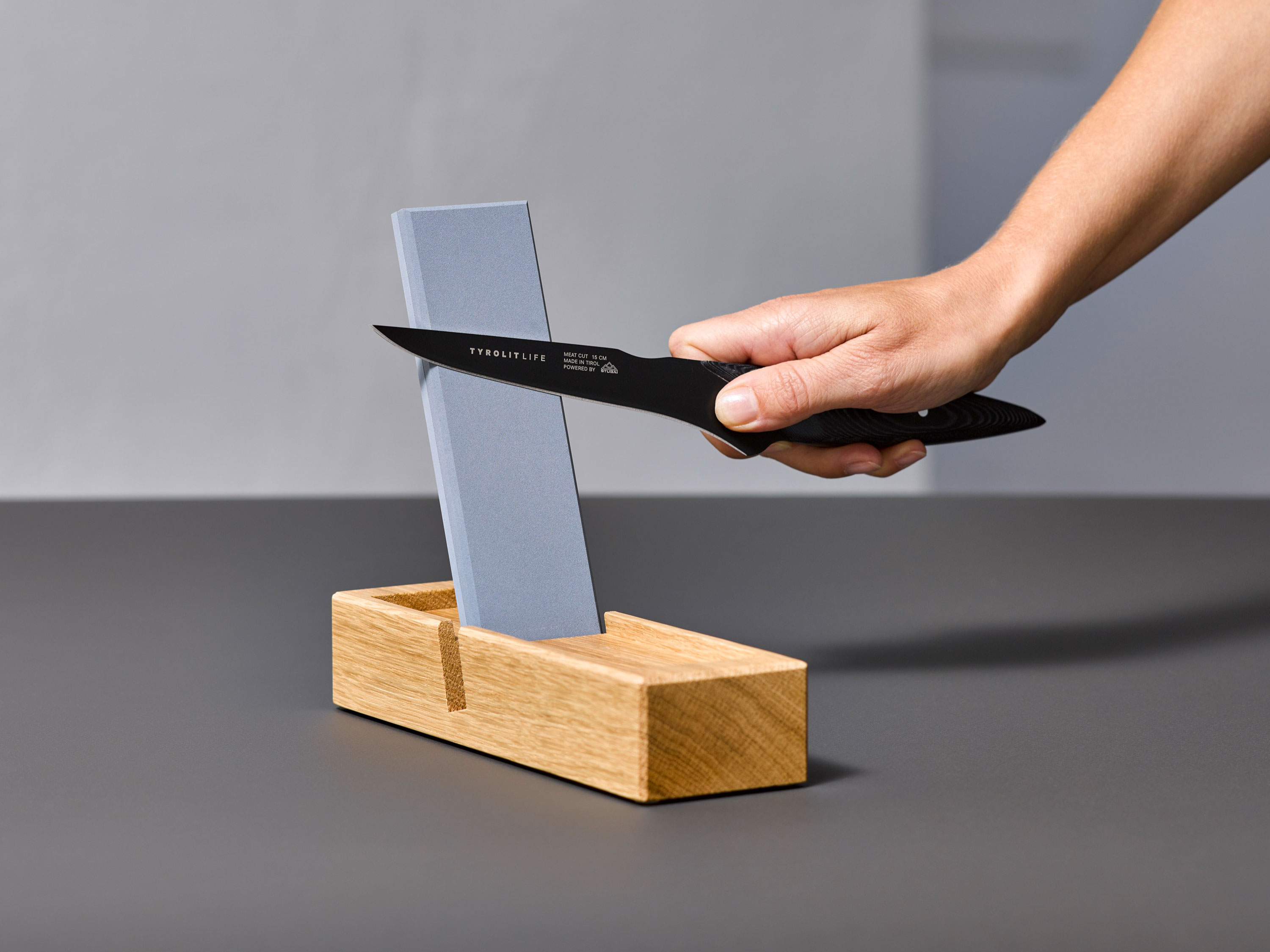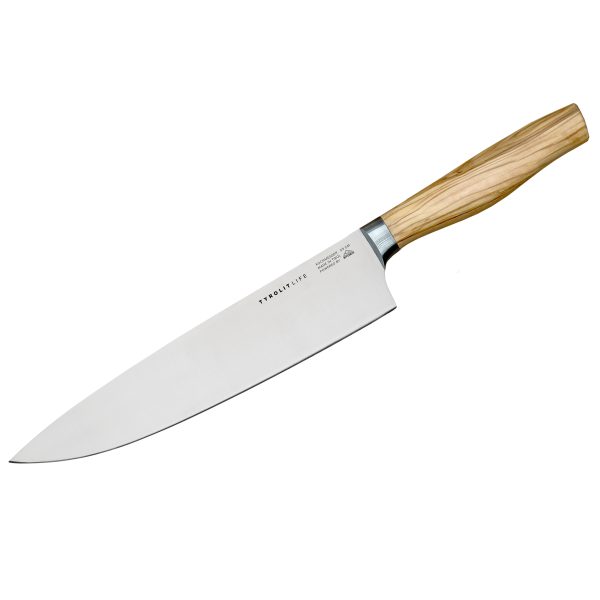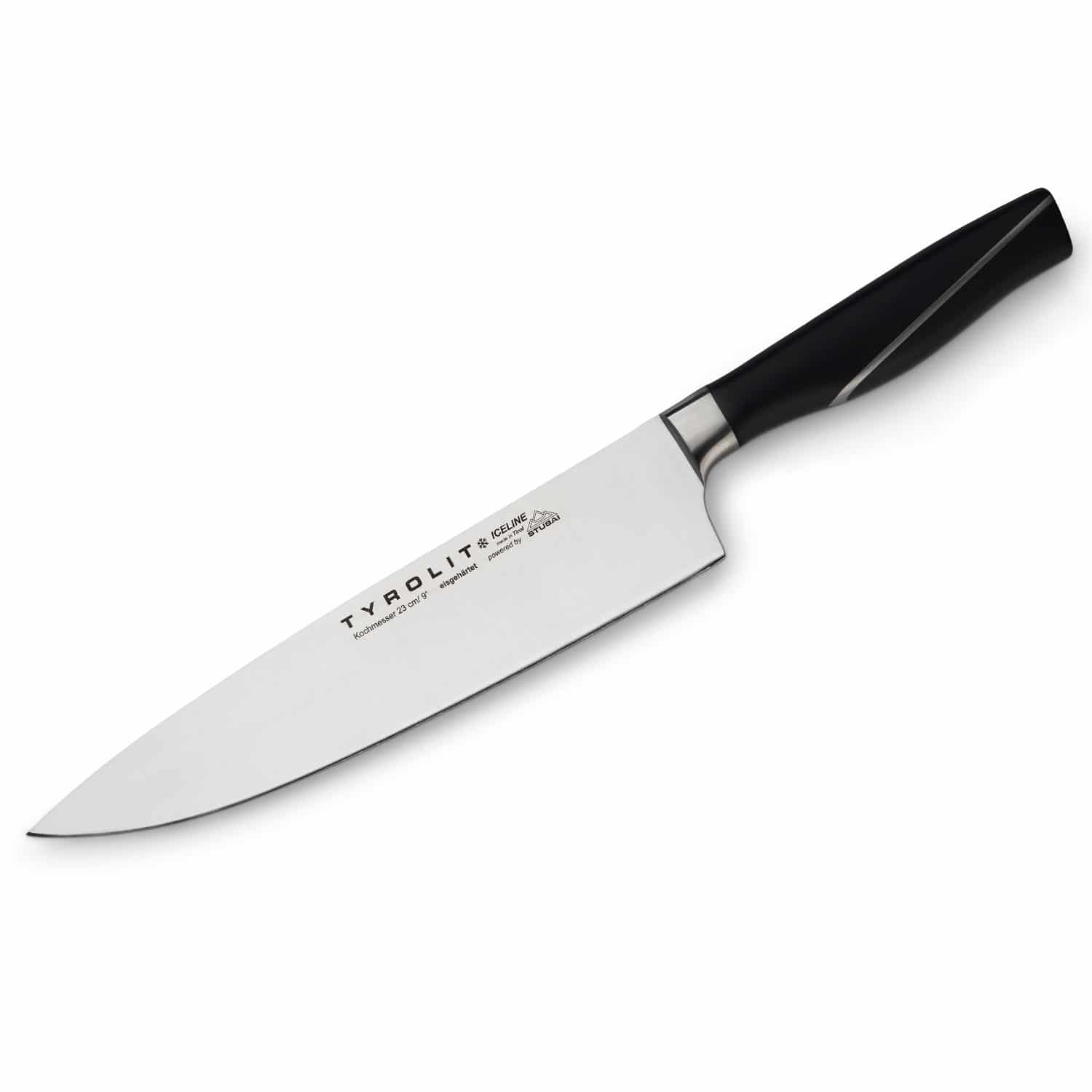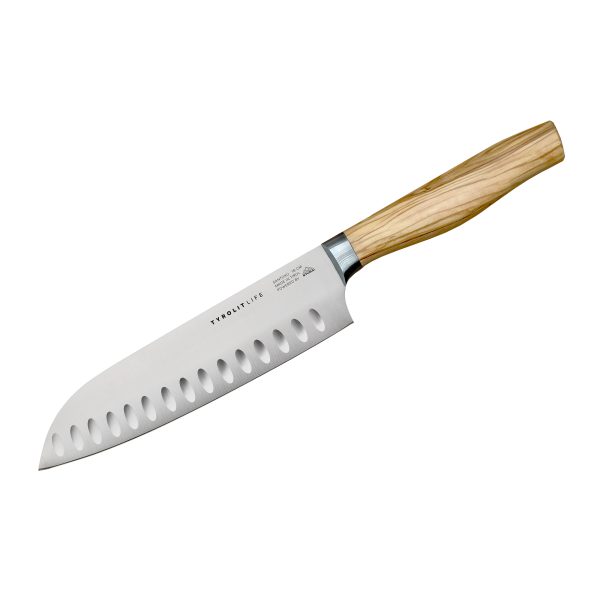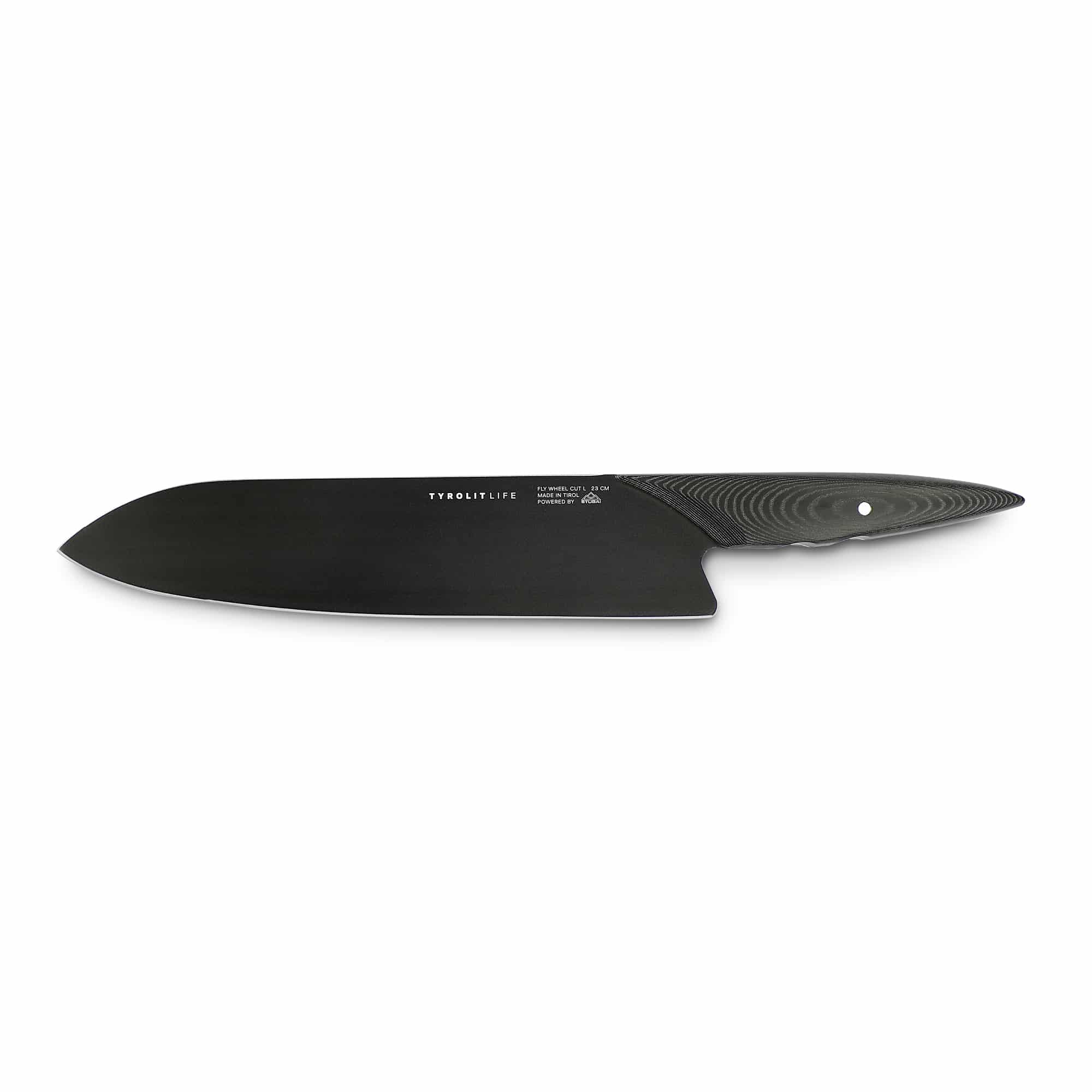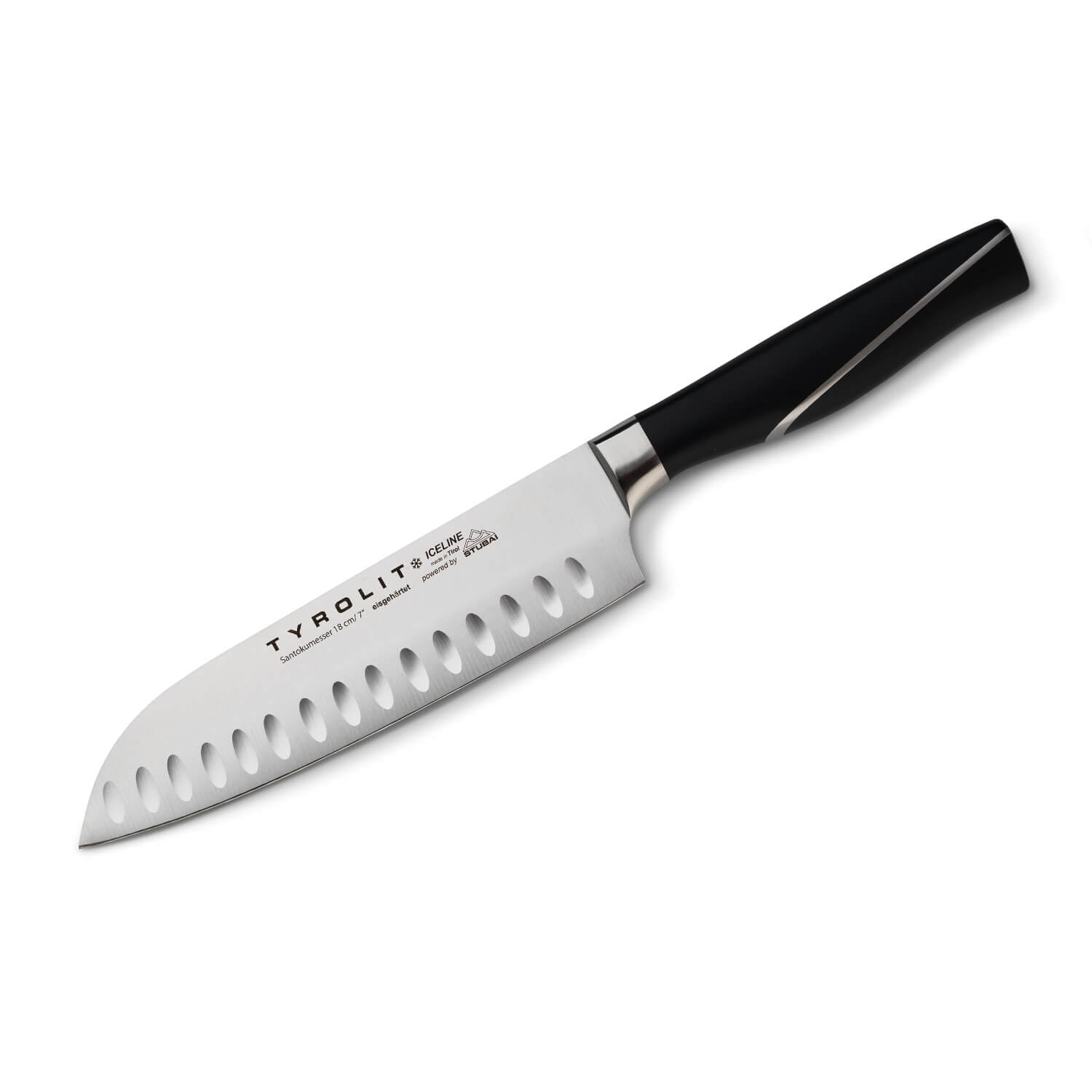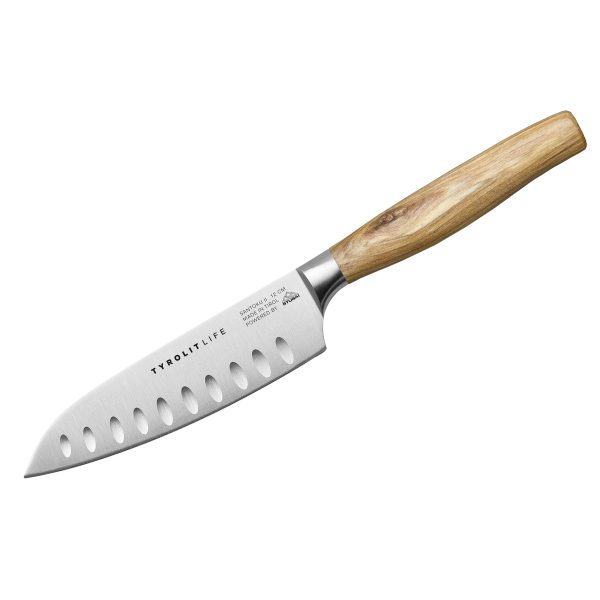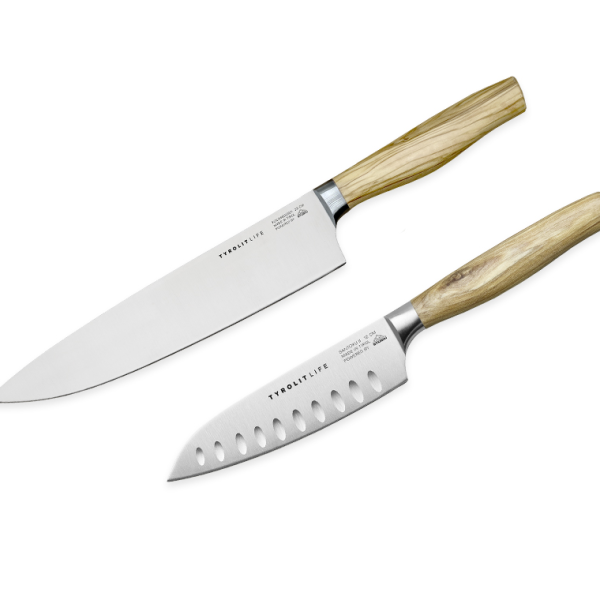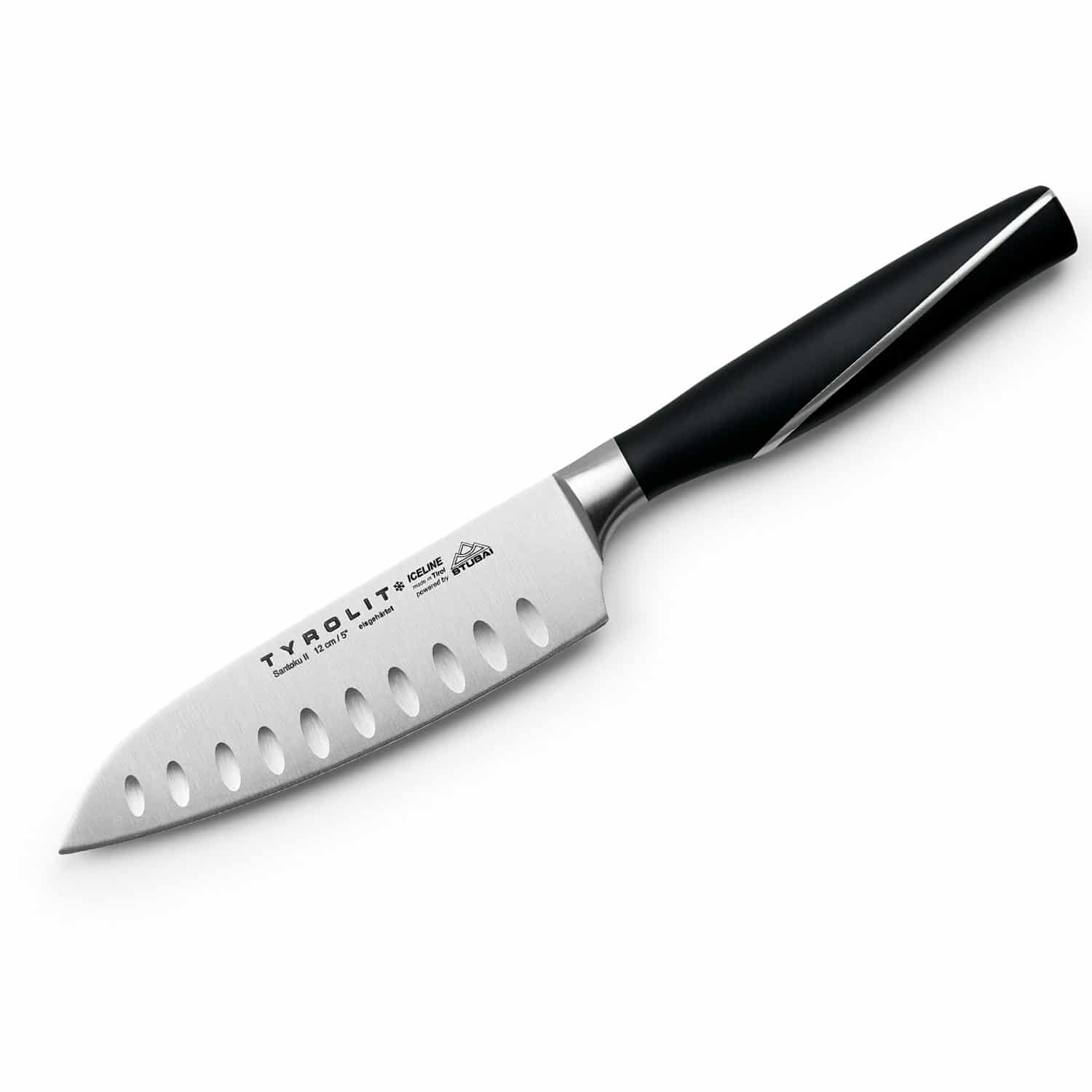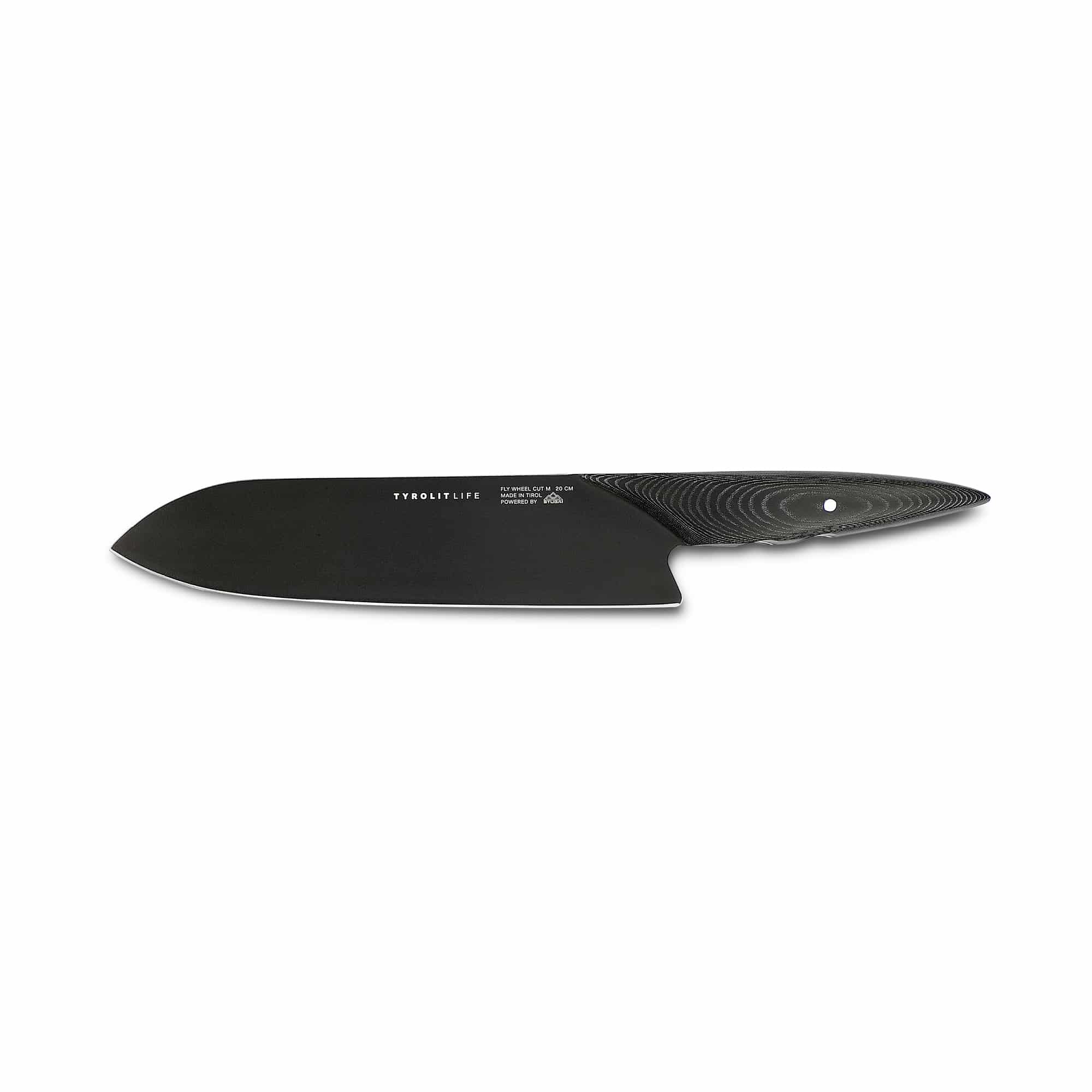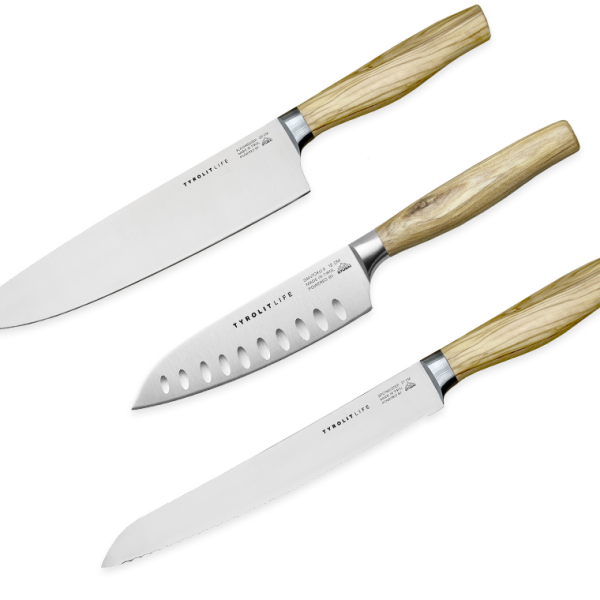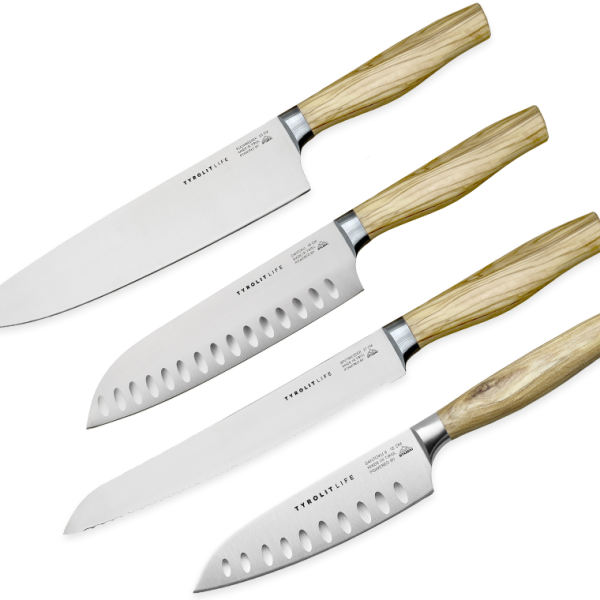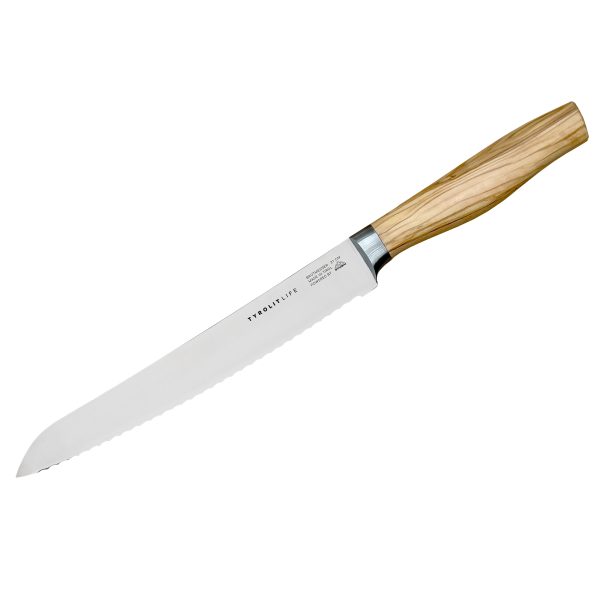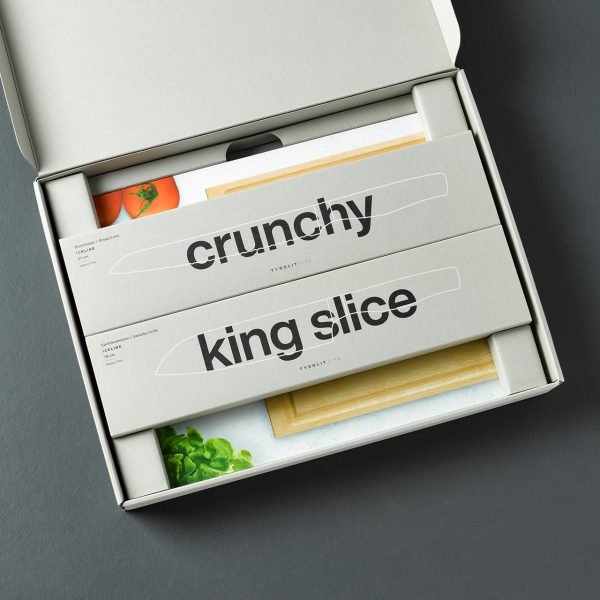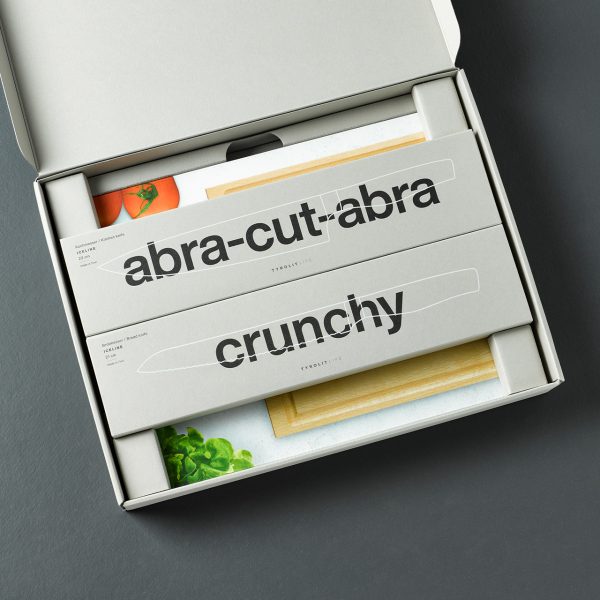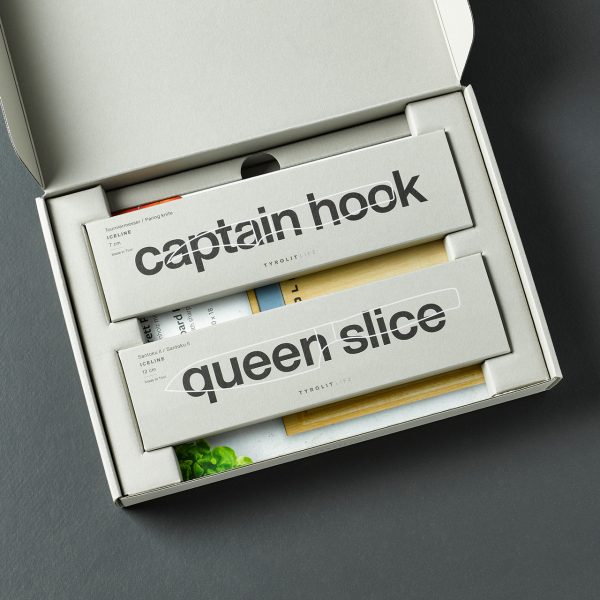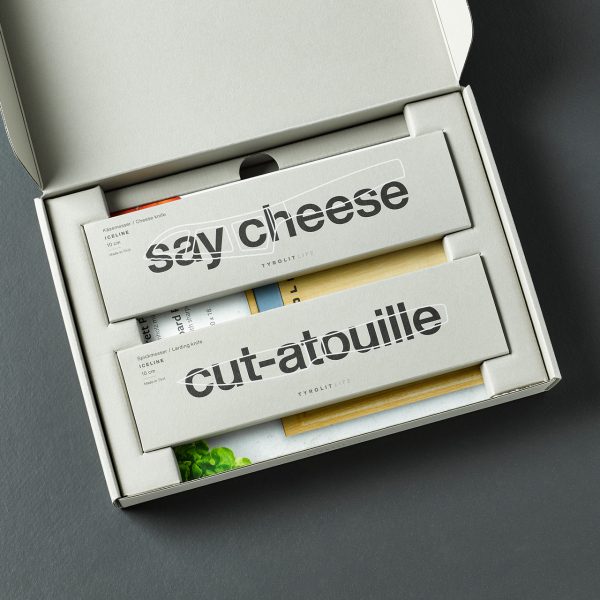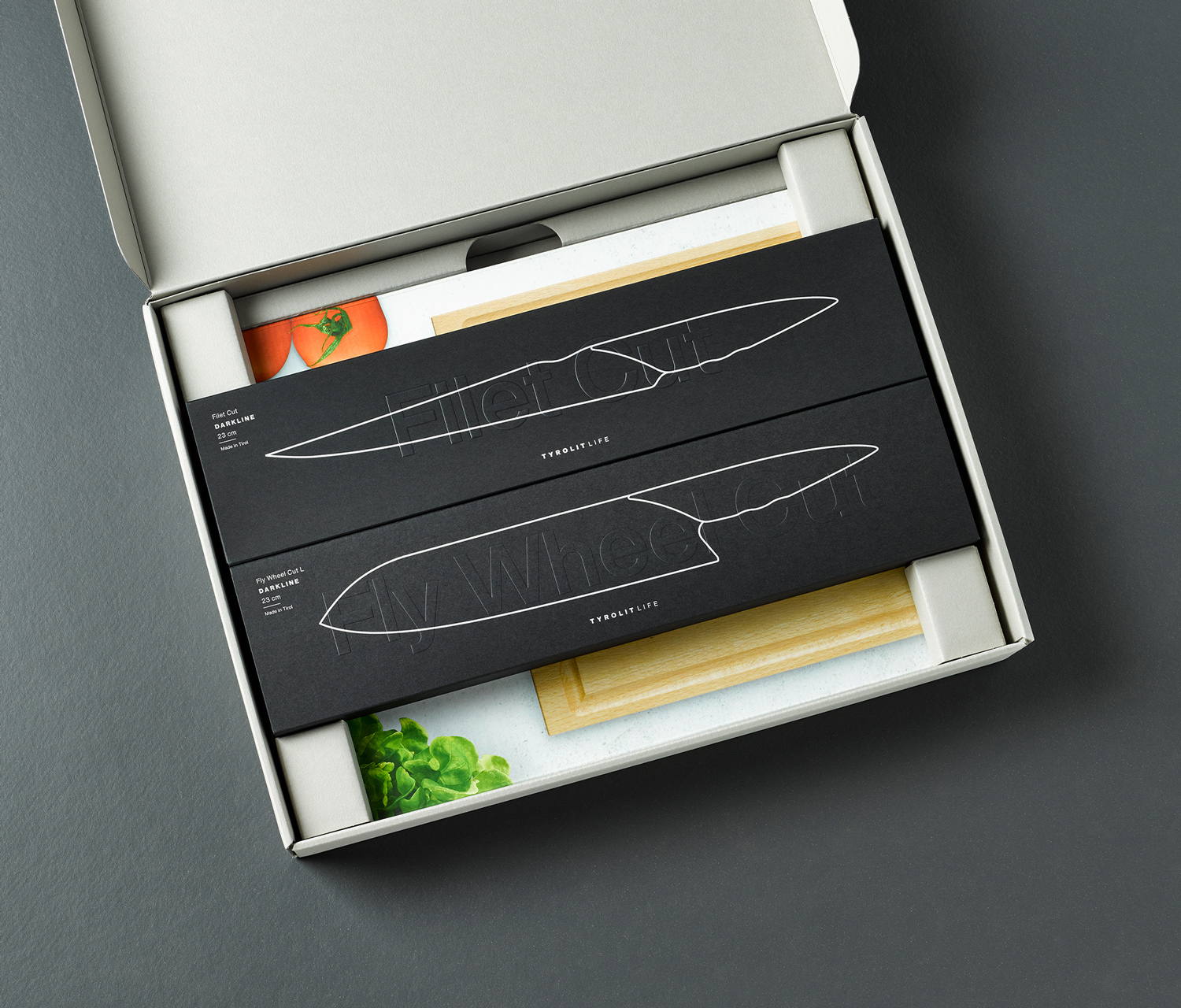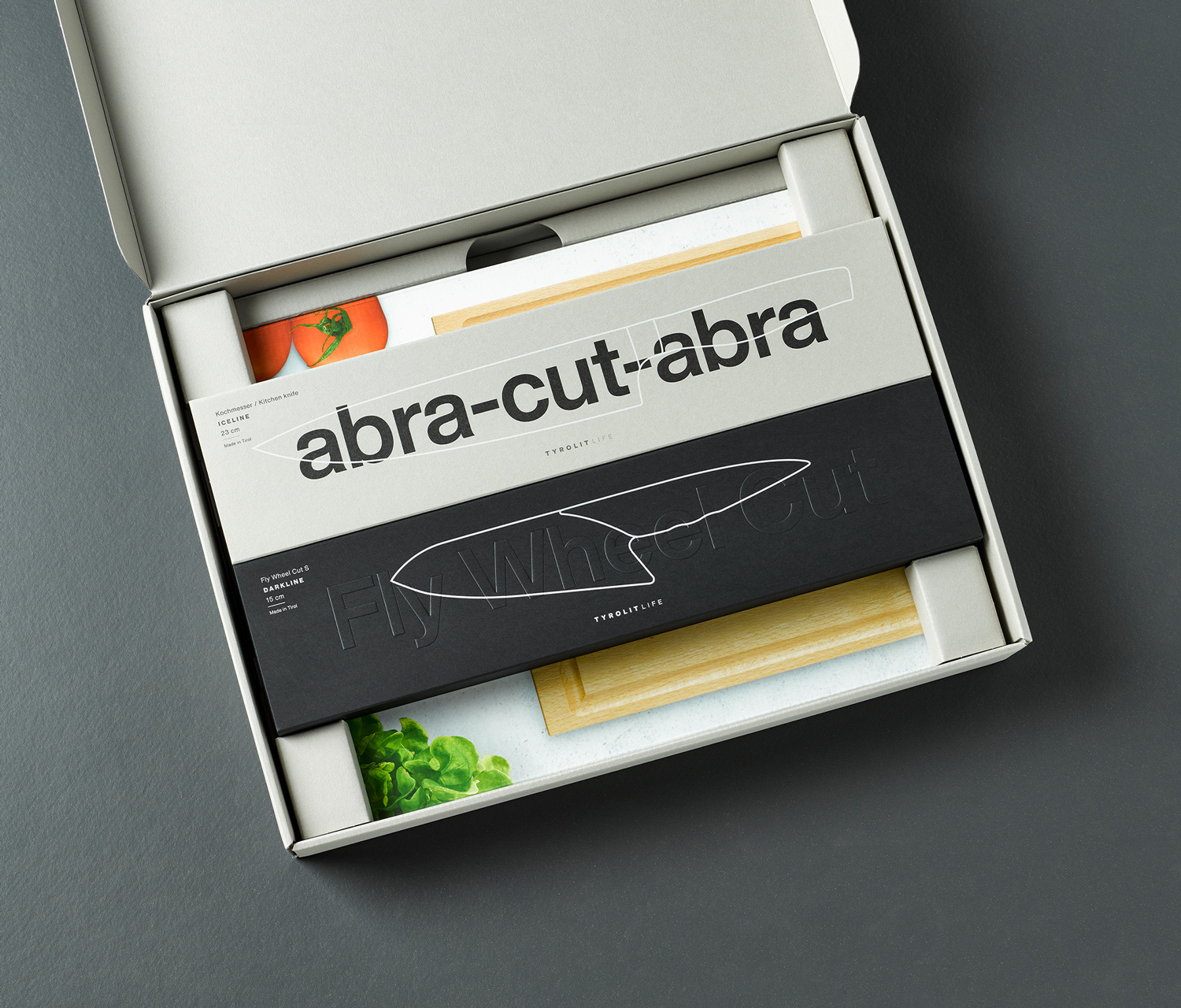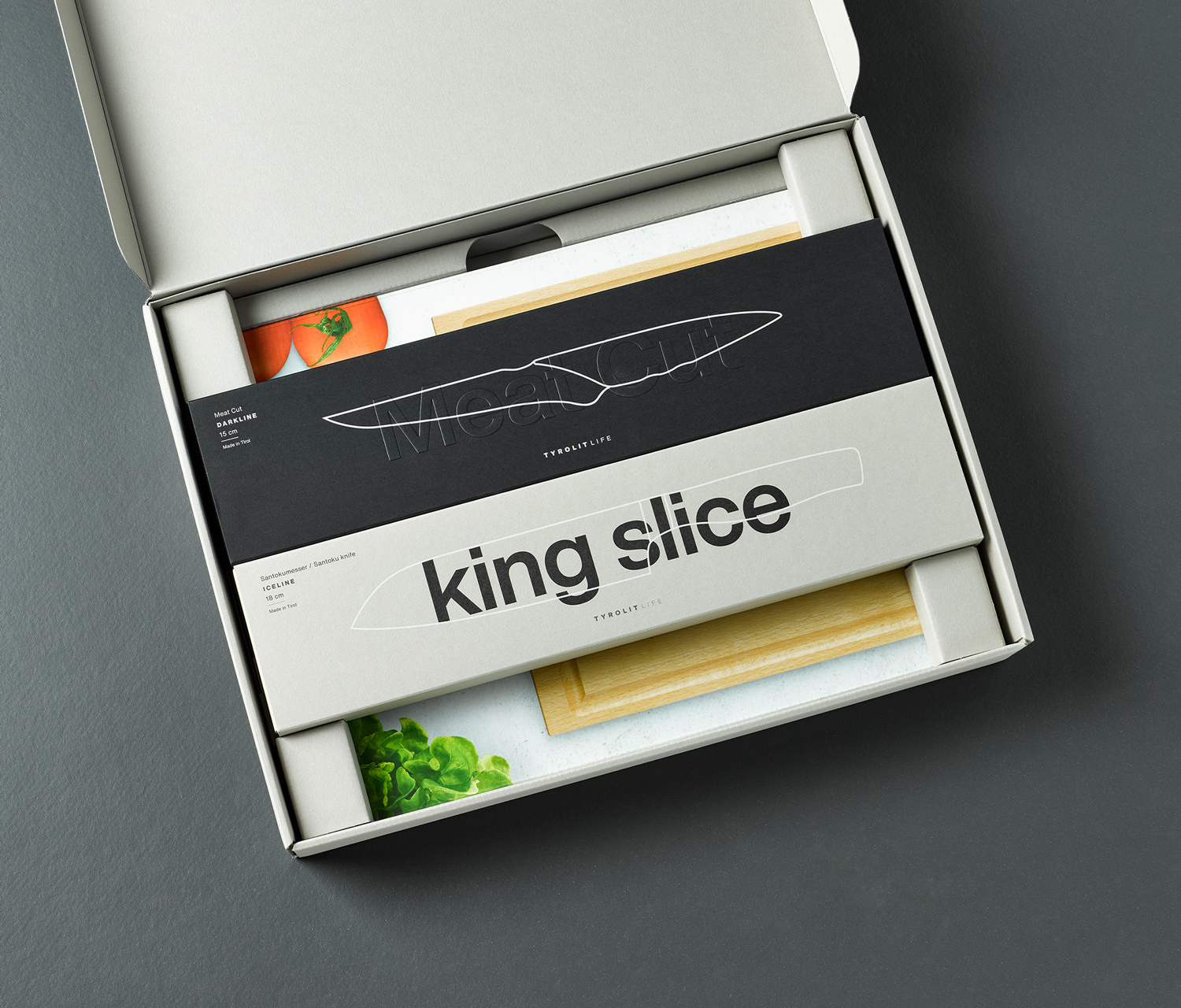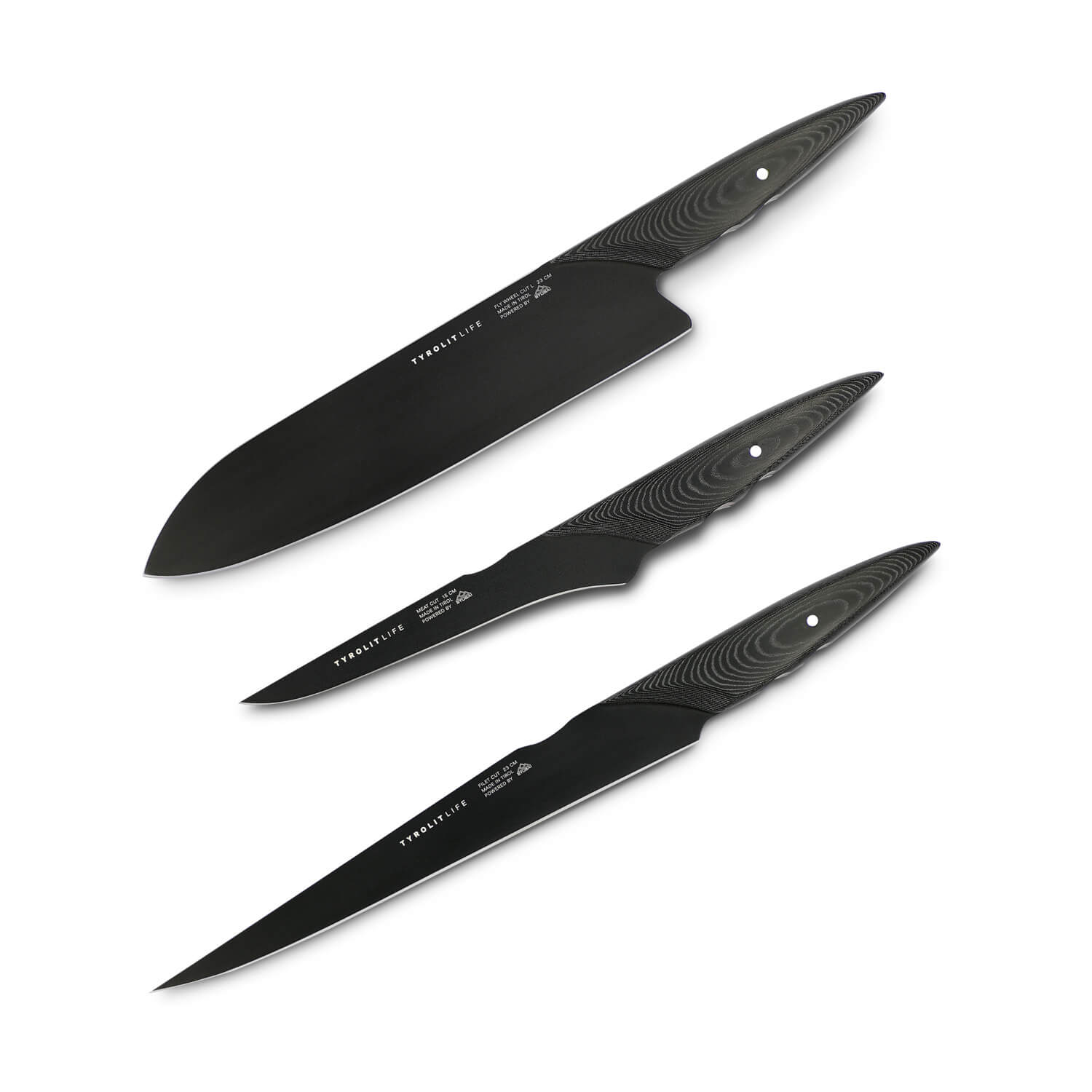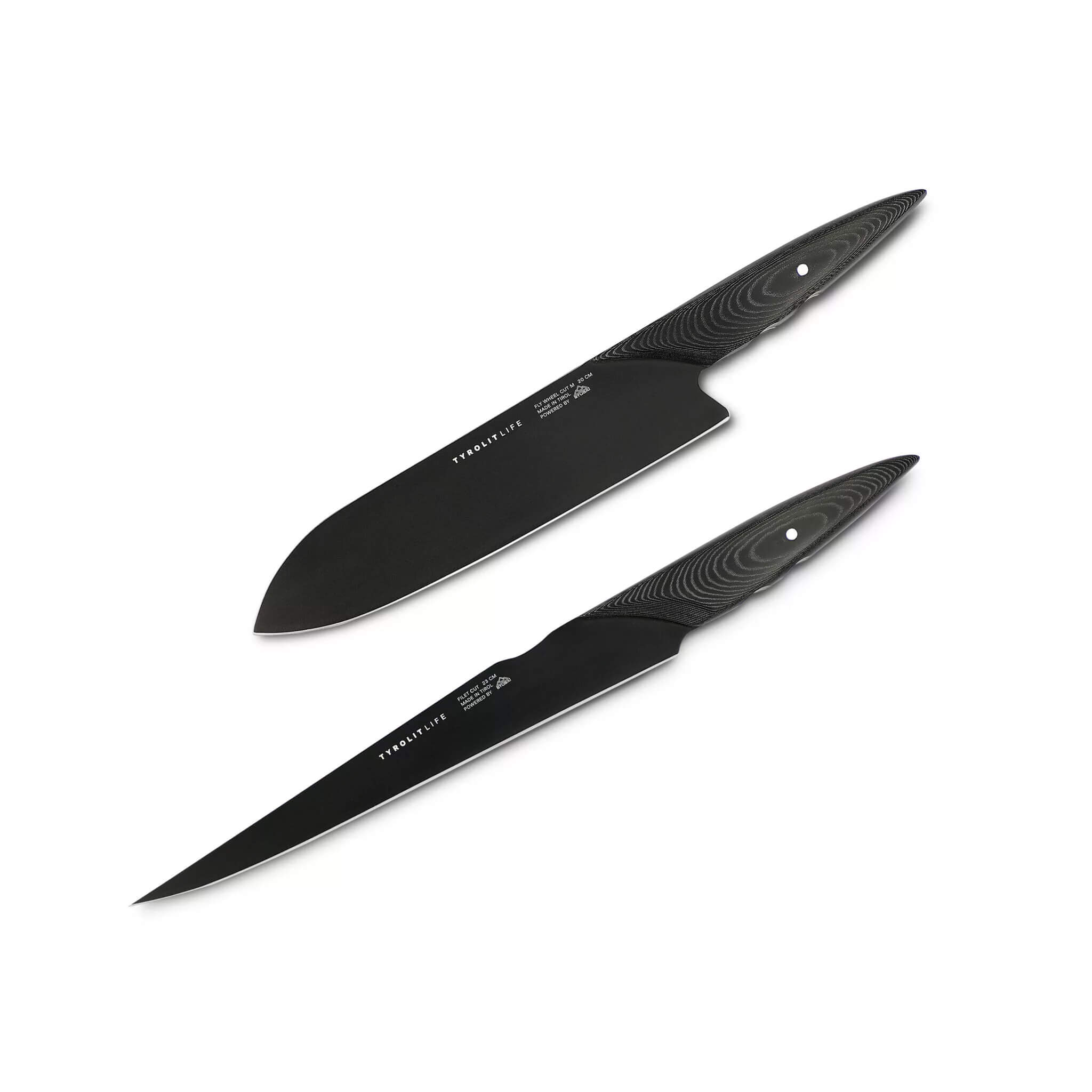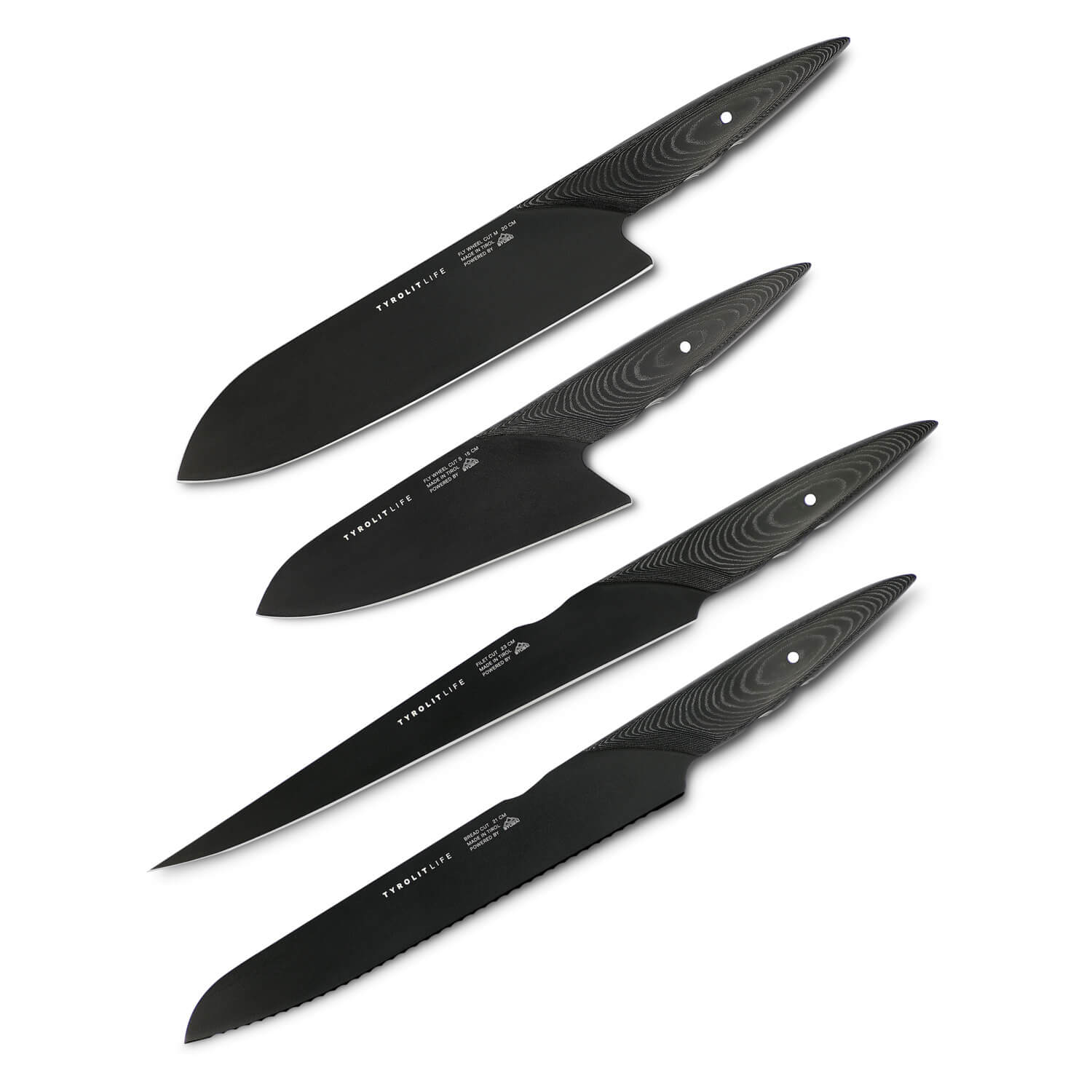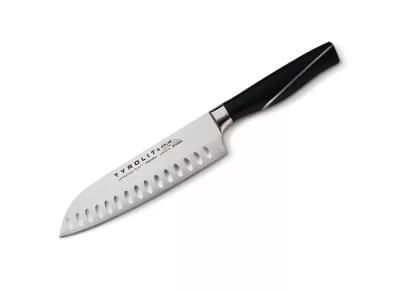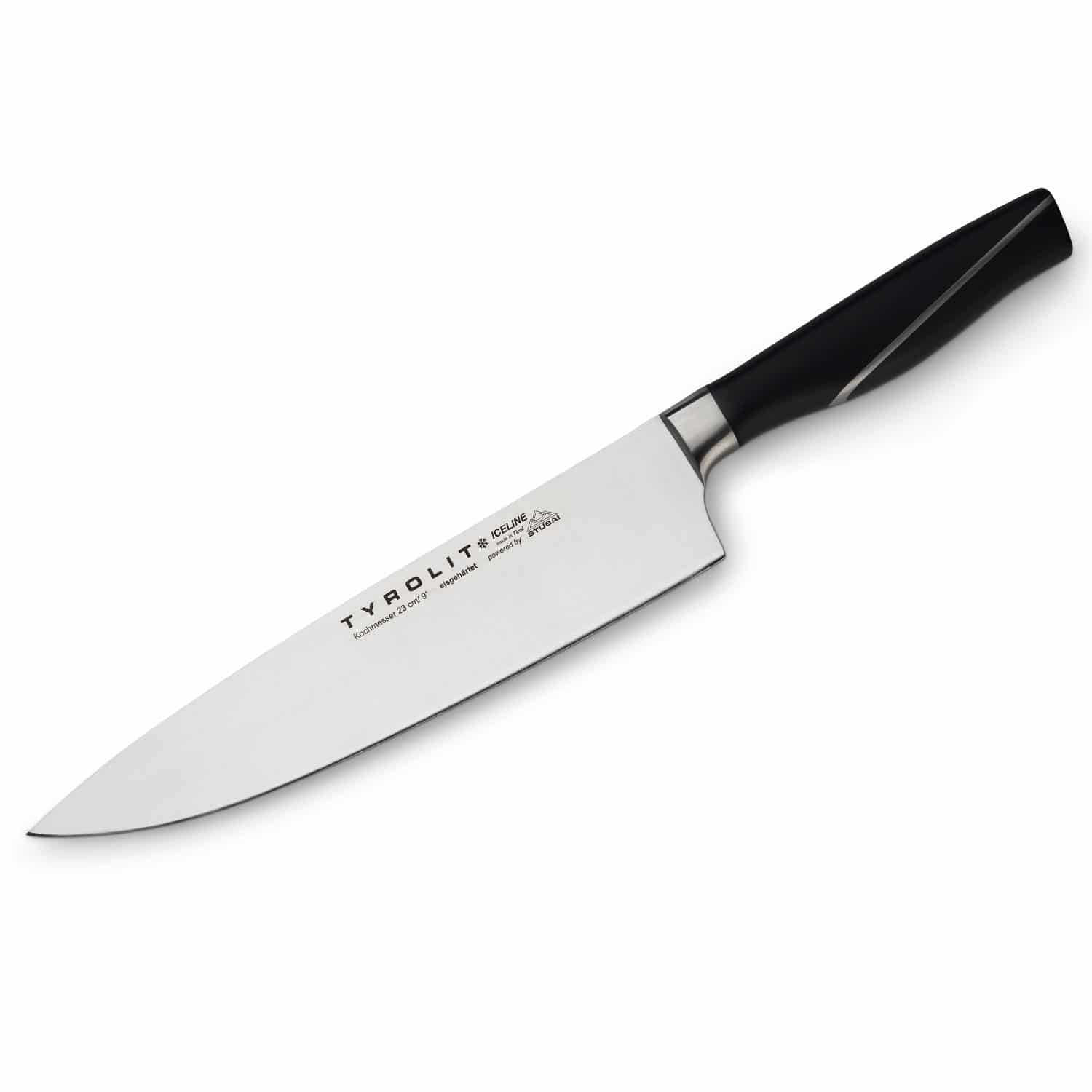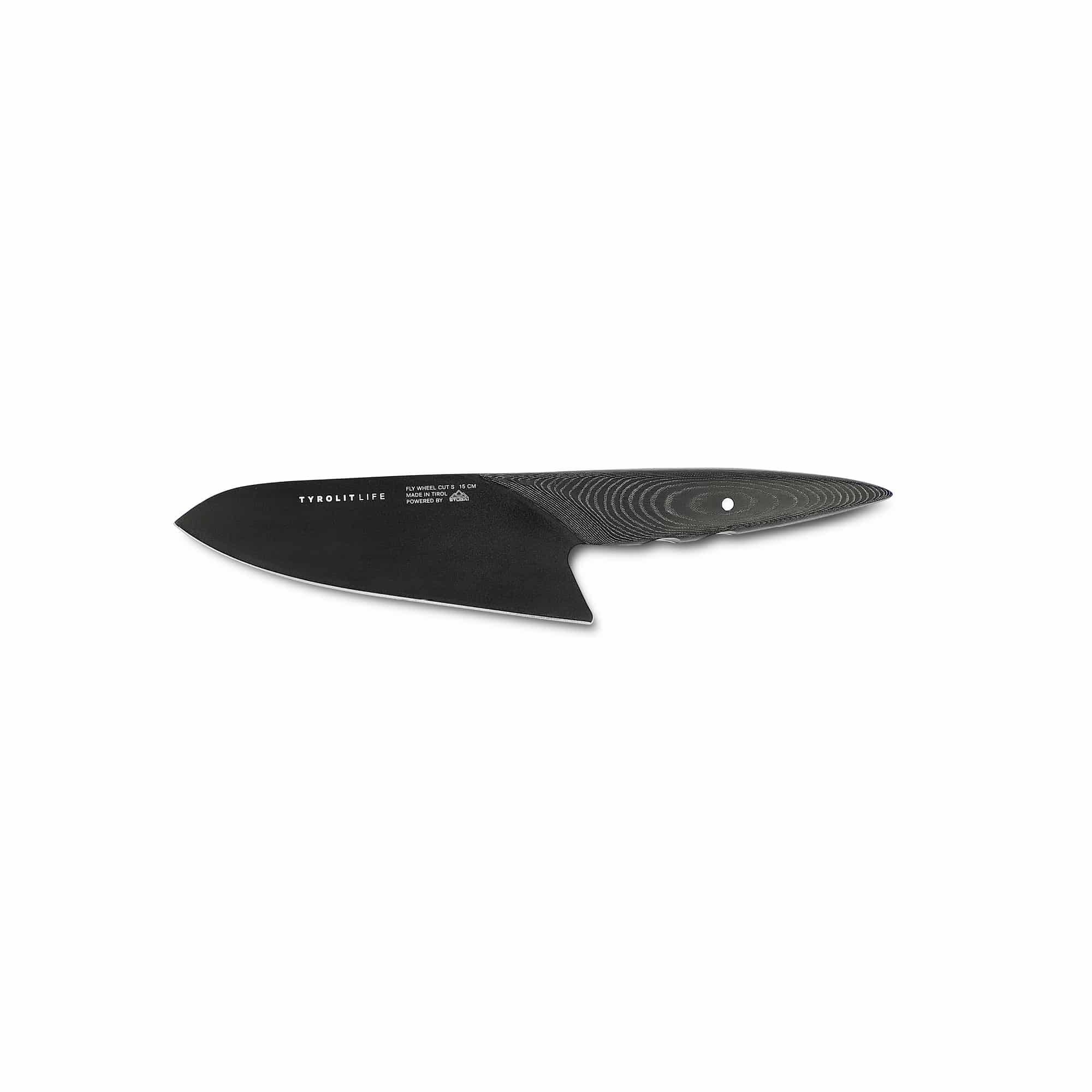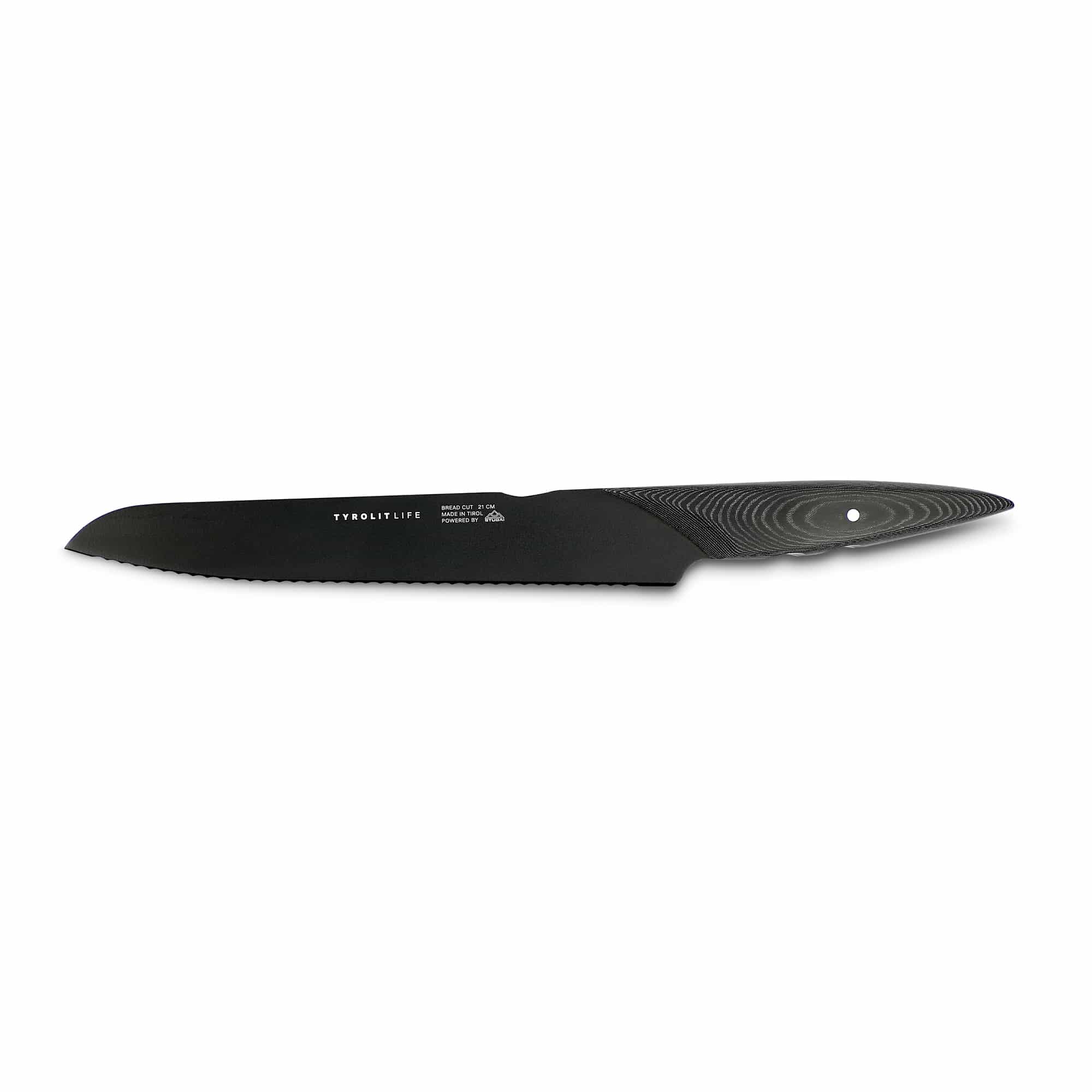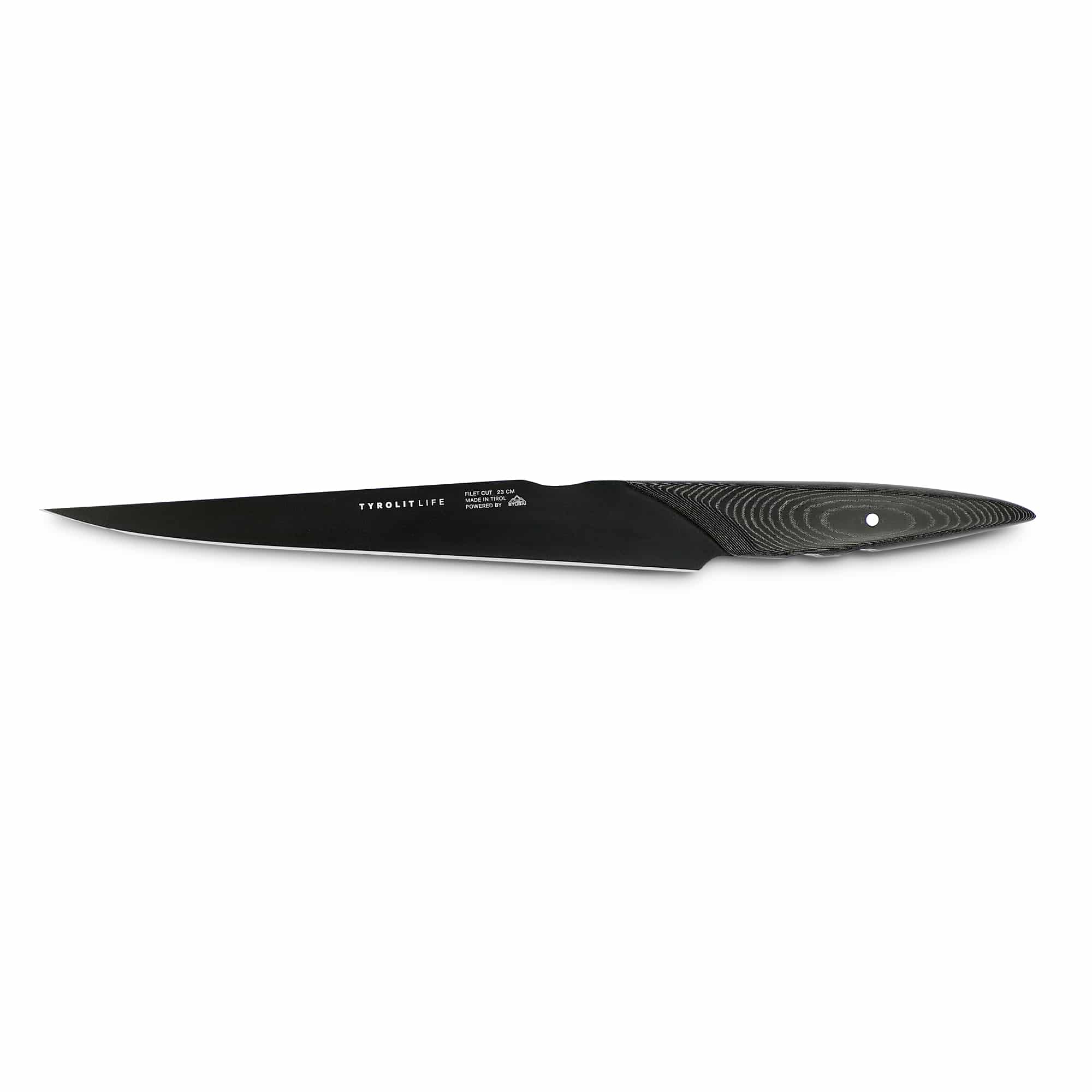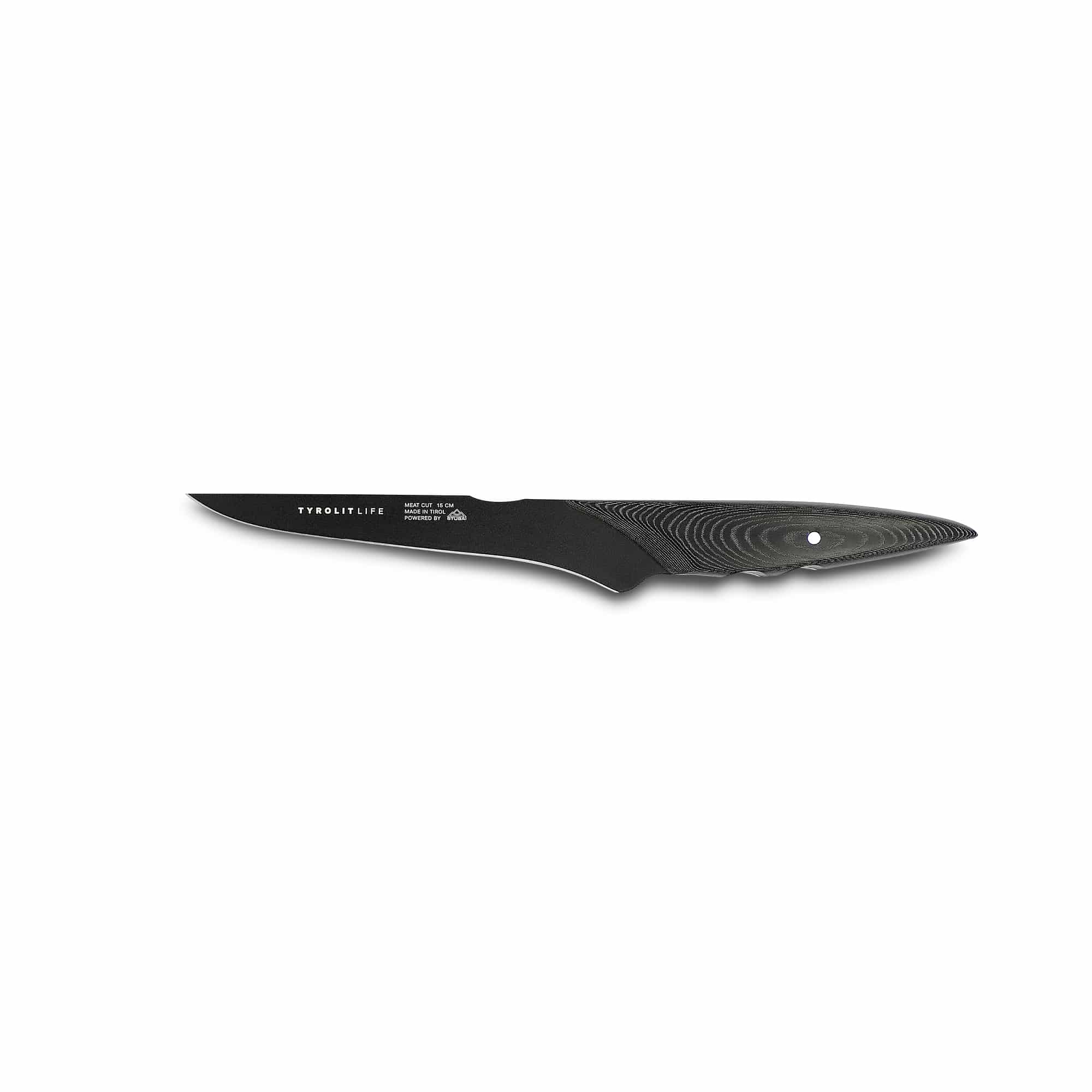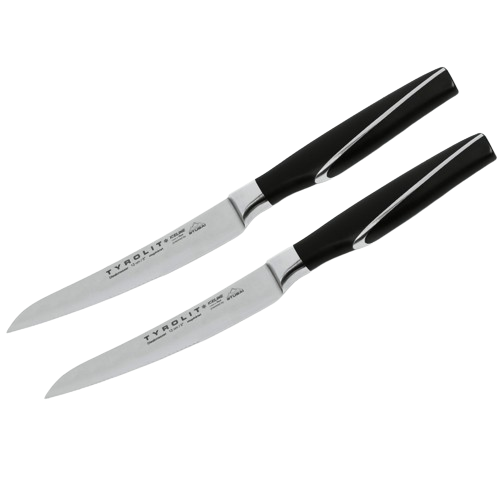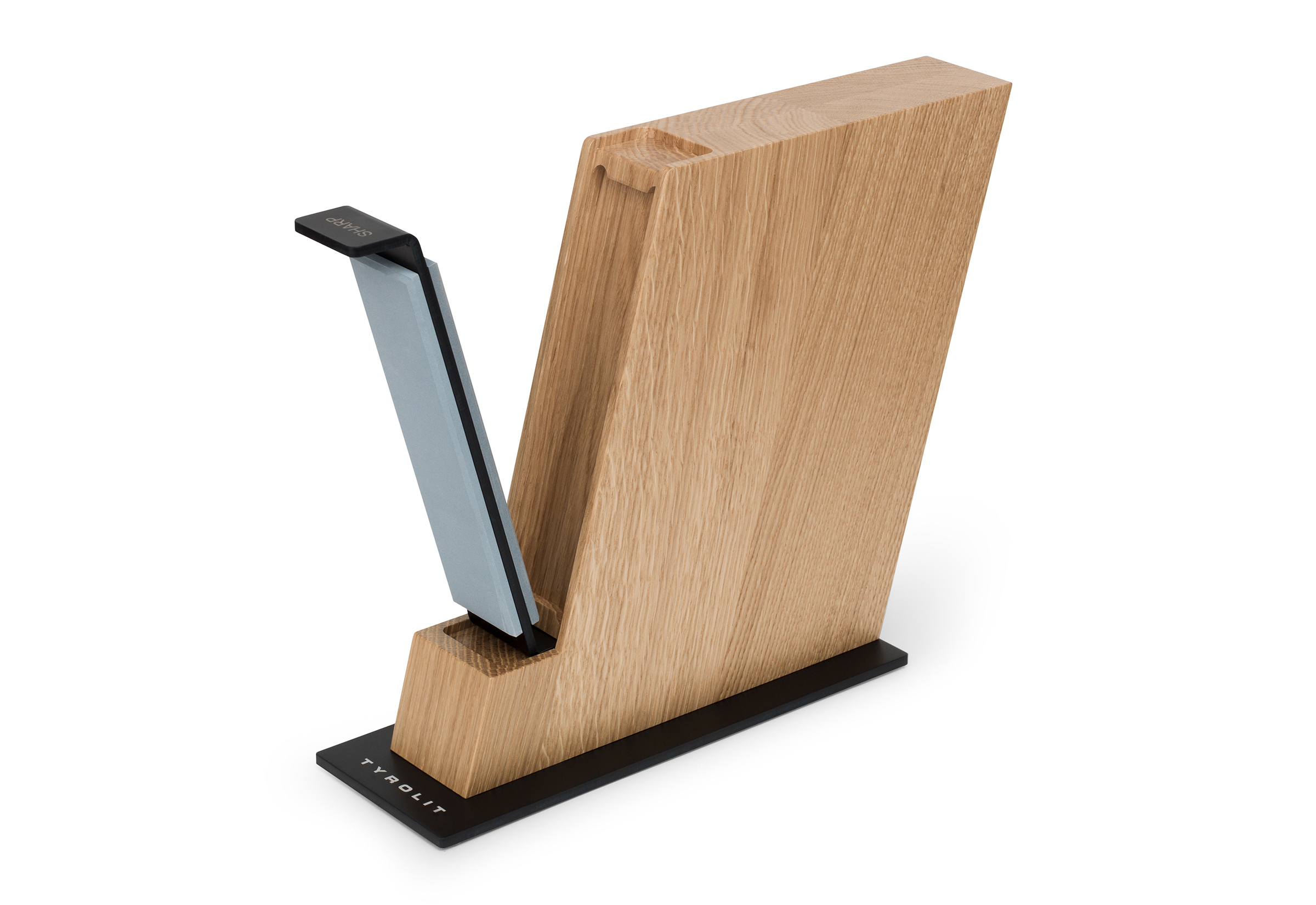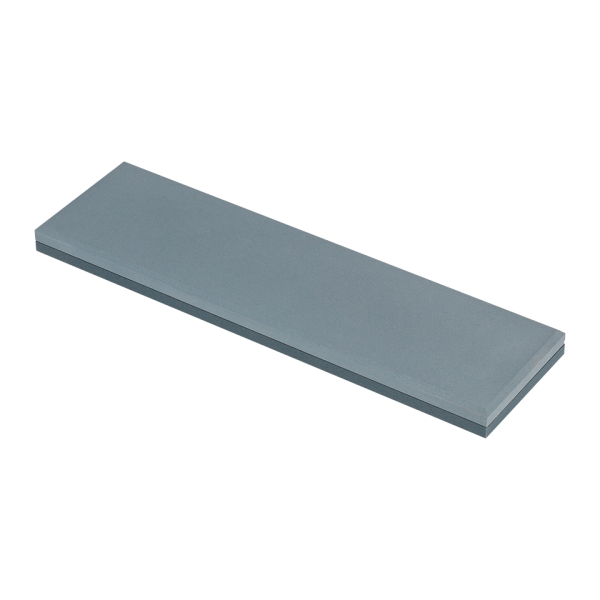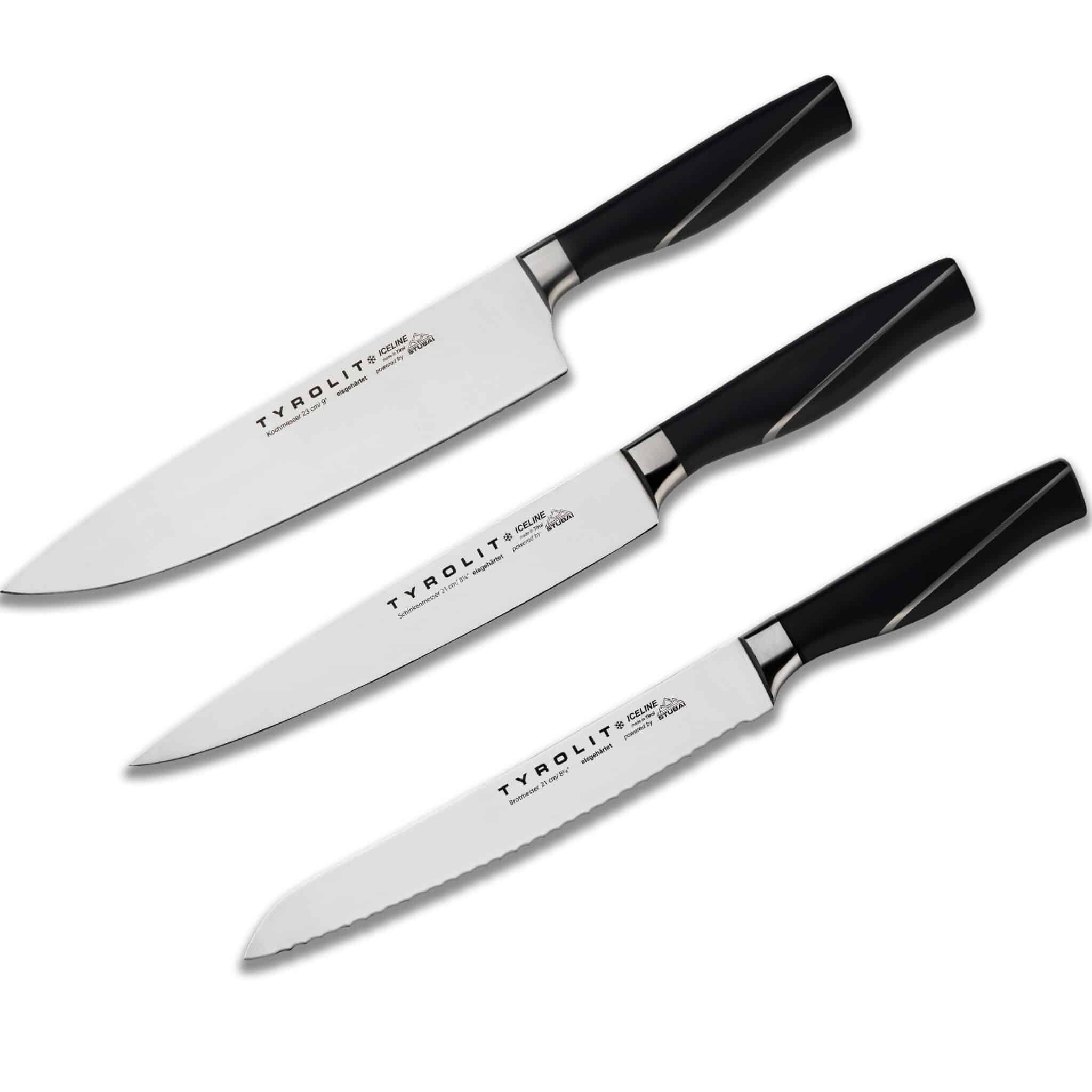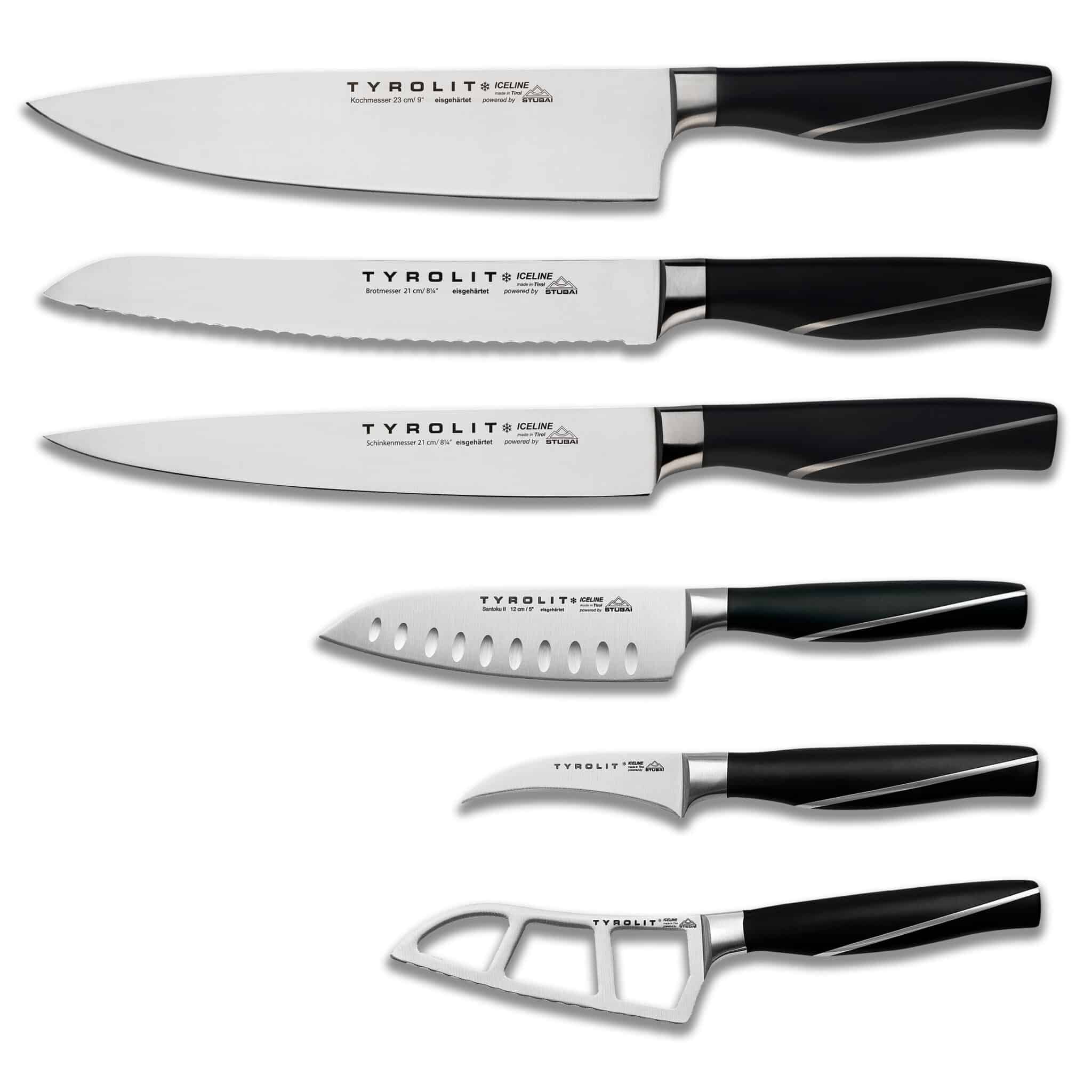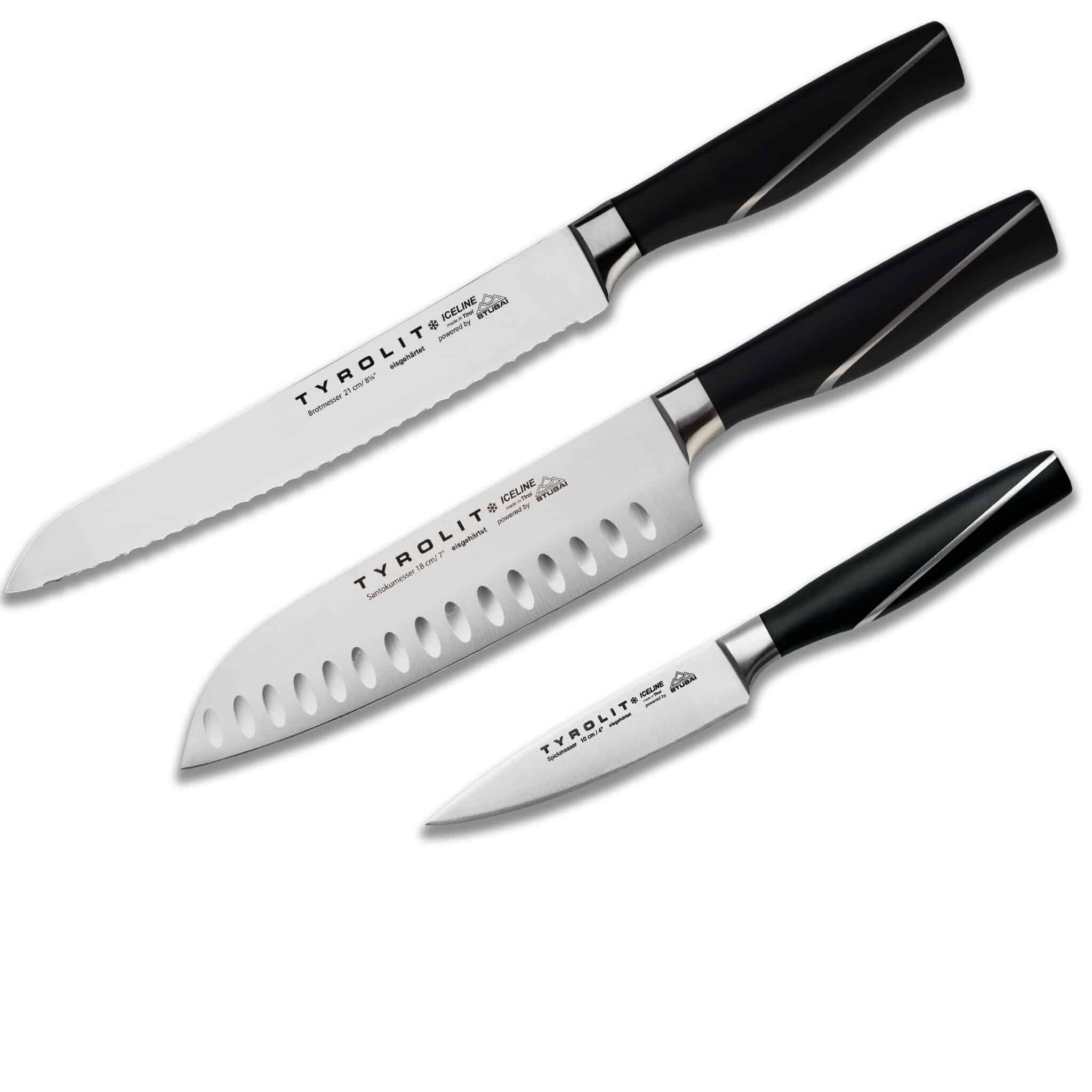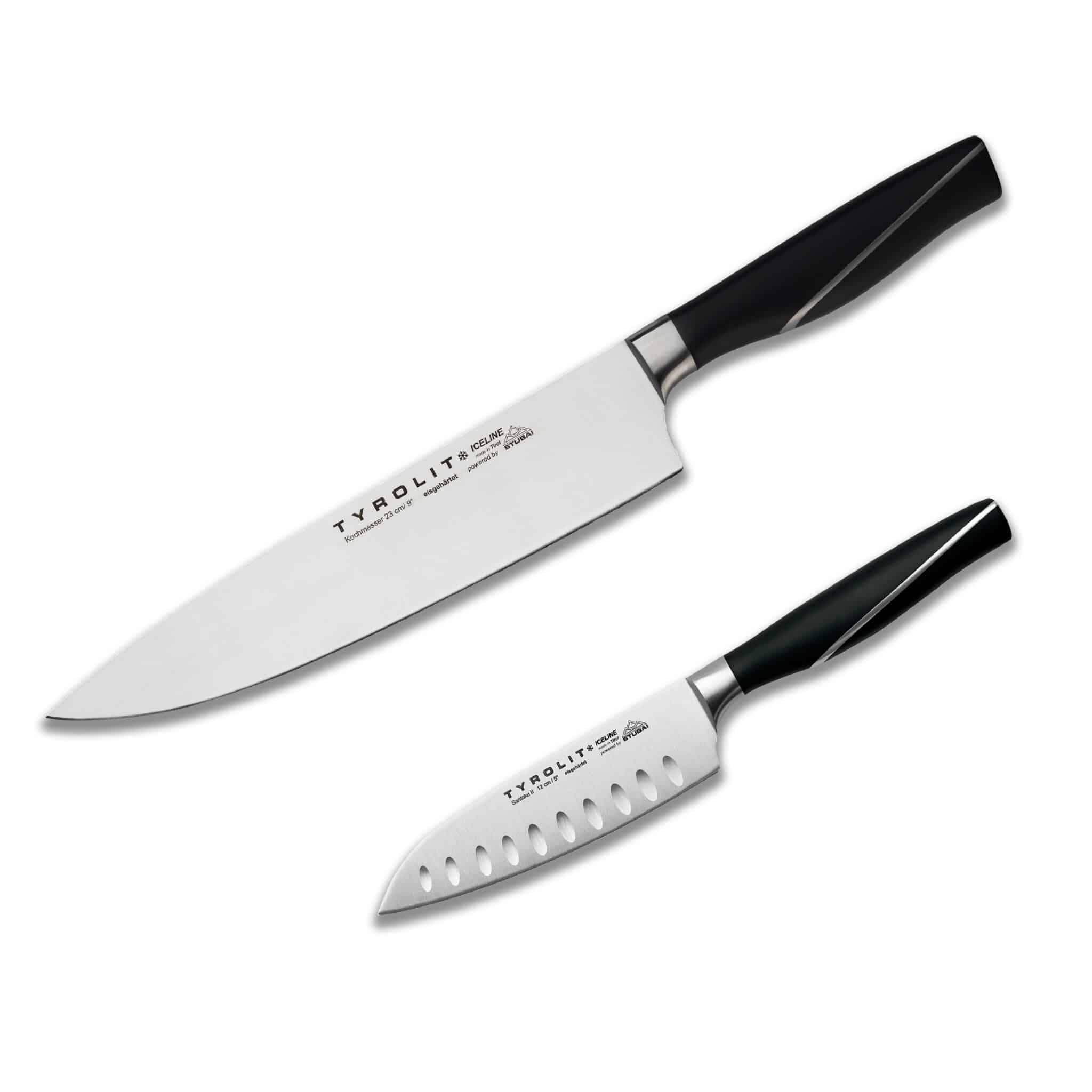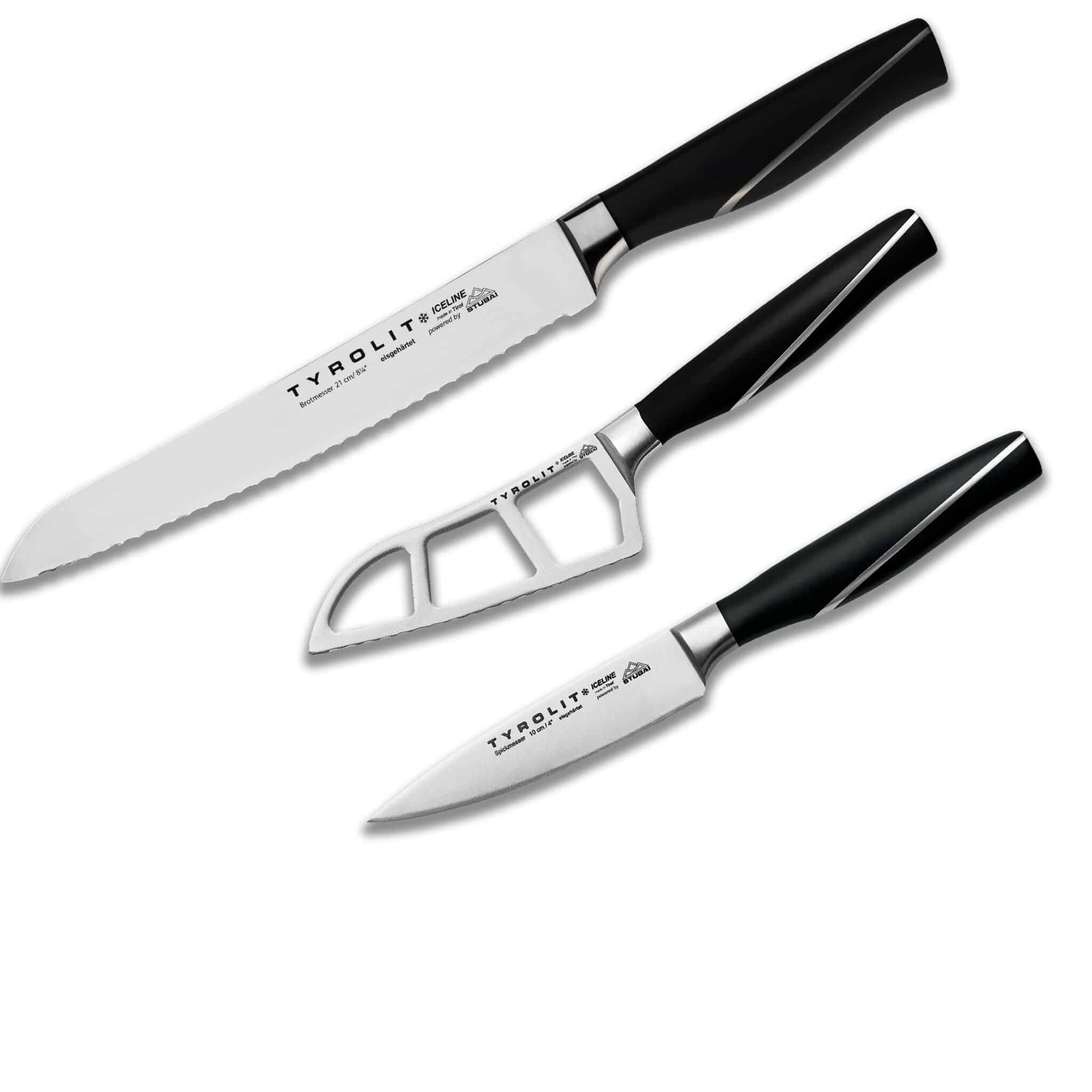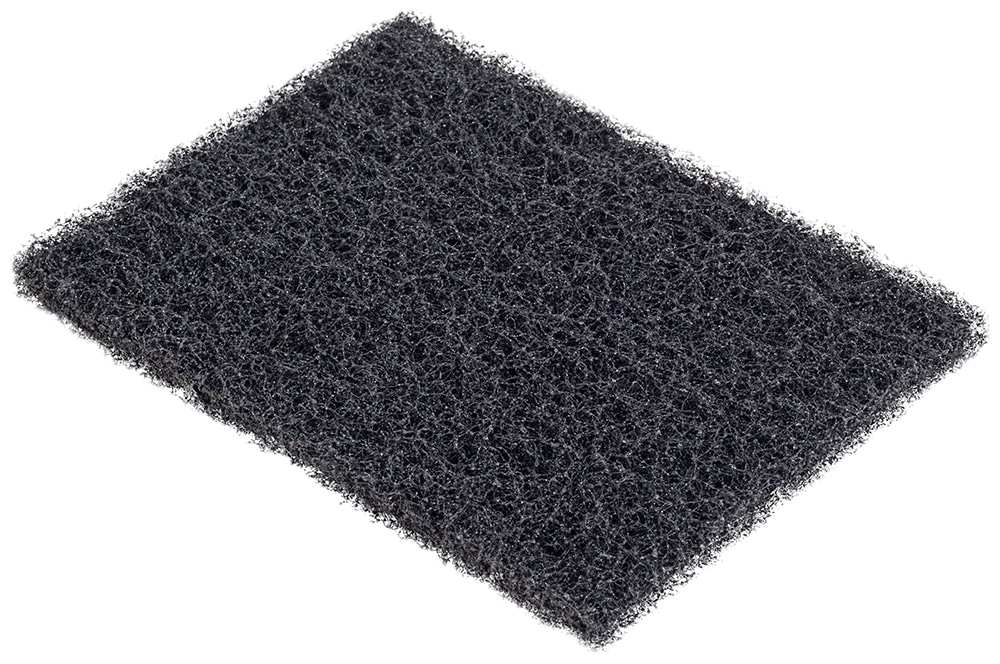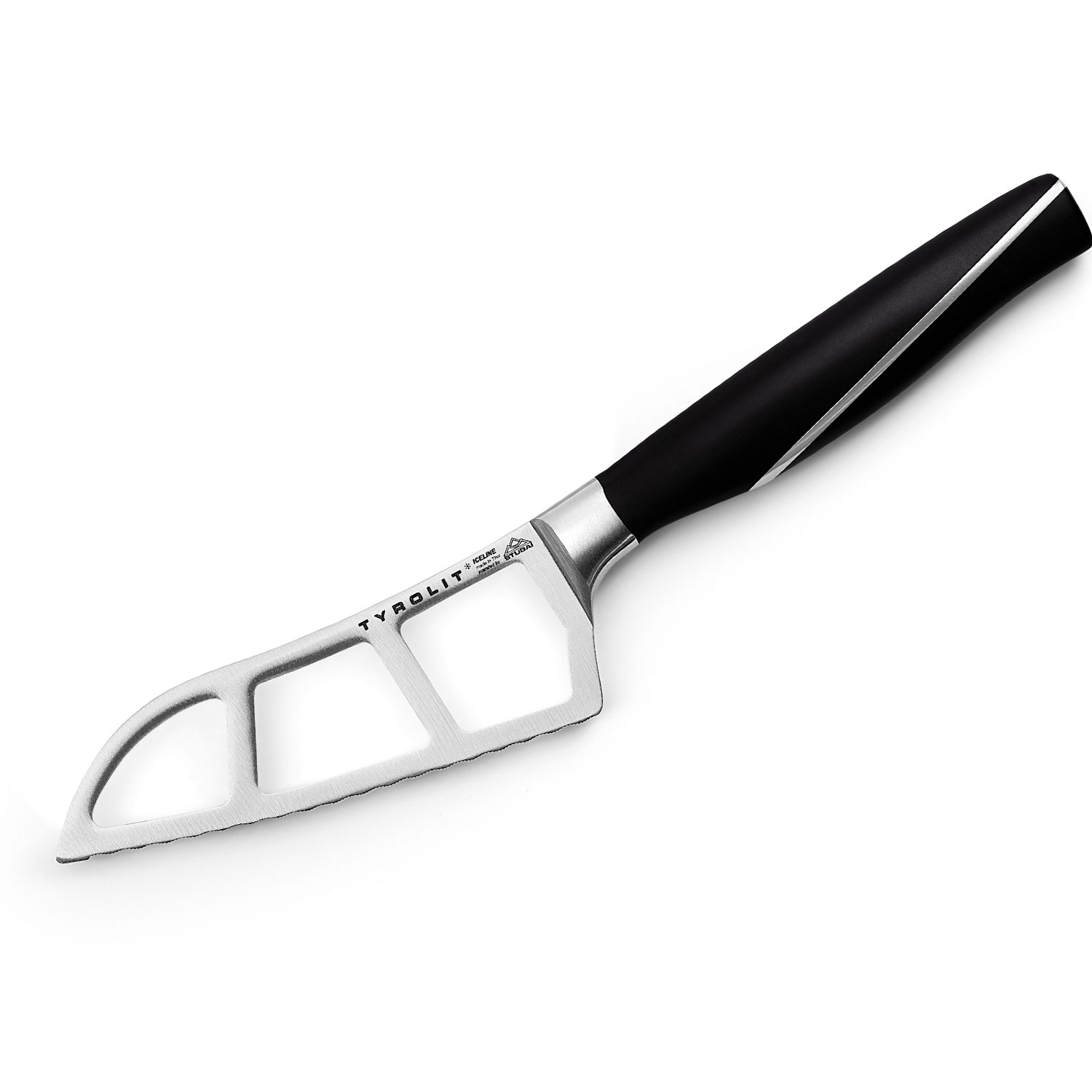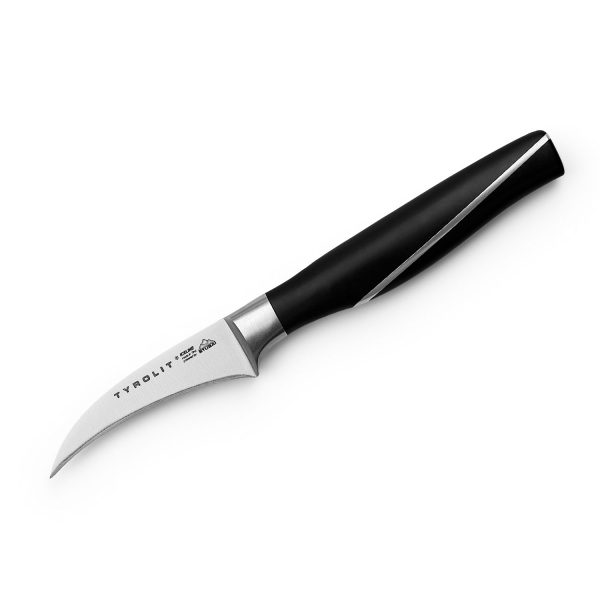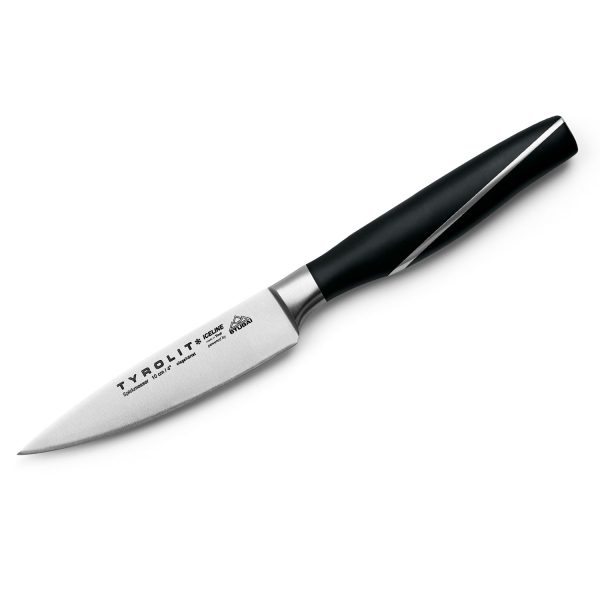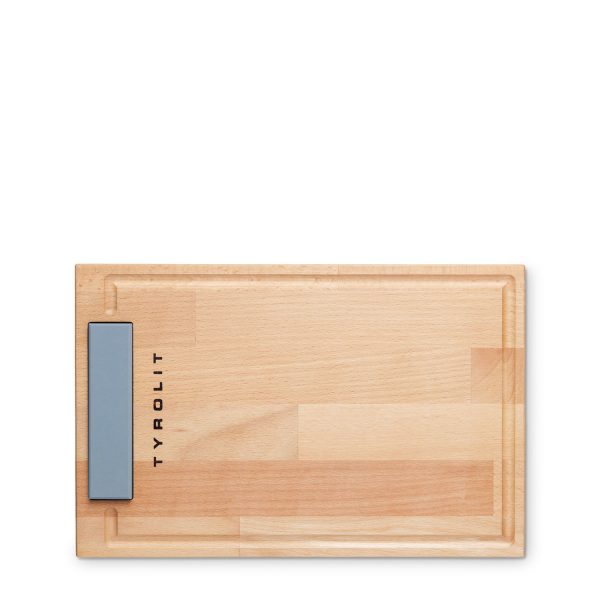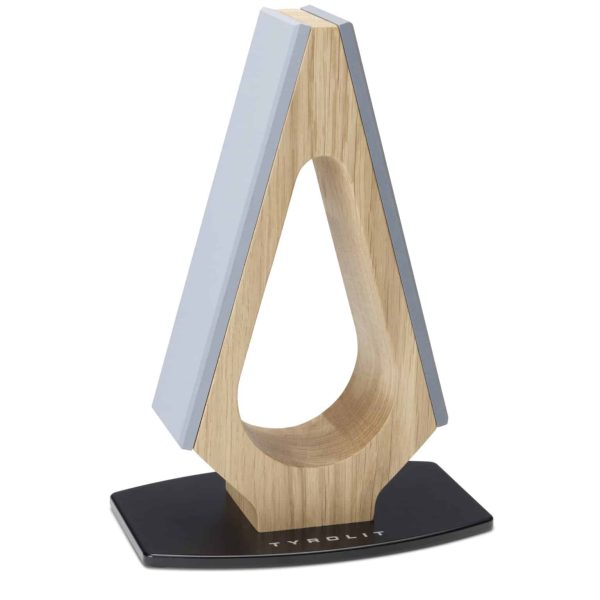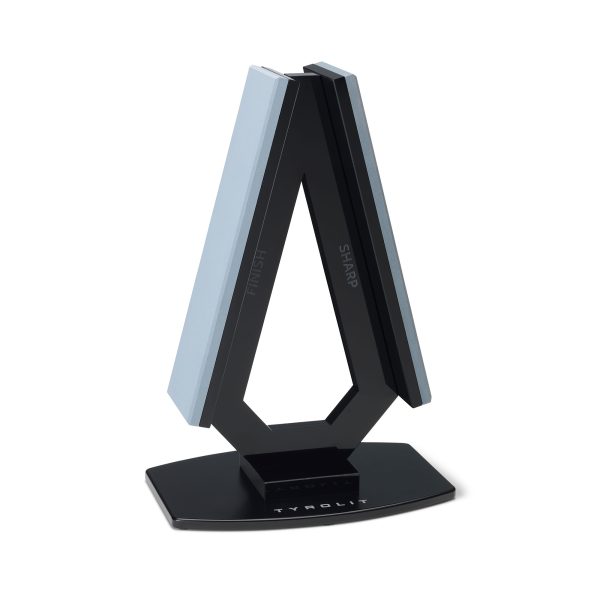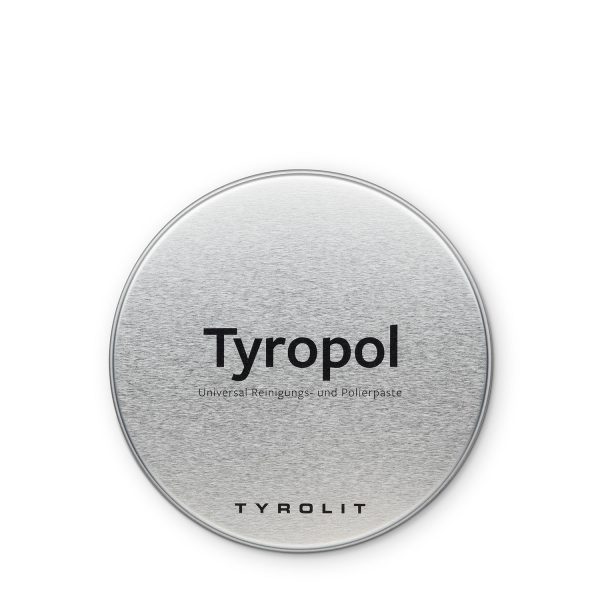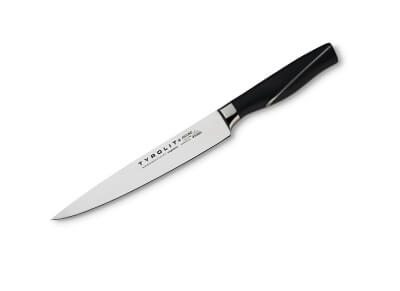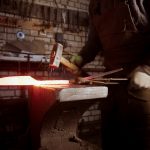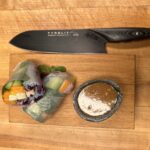Sharpening angles for kitchen knives – What angle should knives be sharpened at?
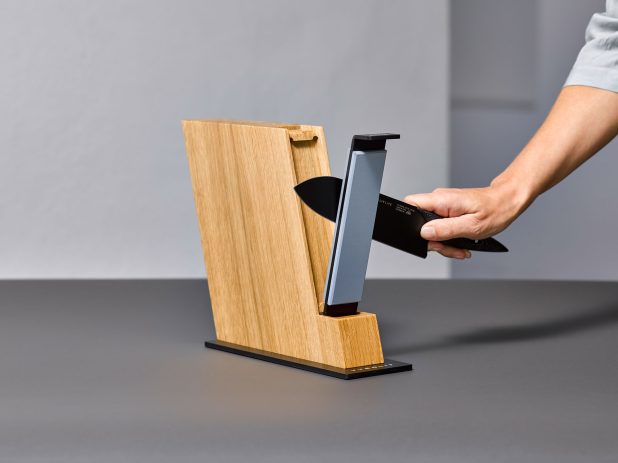
Kitchen knives come in a wide variety of shapes and variants, and the question arises as to which sharpening angle is ideal for them. Because when looking for advice on a blunt kitchen knife, you will come across a wide variety of instructions, tips and tricks for sharpening knives, not all of which lead to the desired goal.
Reason enough for the Tyrolean abrasive expert Tyrolit to give an overview of different knife types and the ideal grinding and sharpening angle in this article.
Sharpening angle or cutting angle?
When sharpening kitchen knives, it is important to understand the difference between the sharpening angle and the cutting angle. Often these terms are confused or mixed together, but they refer to different aspects of blade geometry.
The sharpening angle refers to the angle at which the blade of the knife is placed on the sharpening stone, whetstone or sharpener. This angle determines how much the blade is sharpened and thus influences the sharpness of the knife. A smaller sharpening angle results in a sharper blade, while a larger angle results in a more robust but potentially less sharp blade.
The sharpening process for European kitchen knives is applied on both sides of the blade, at a constant angle. This results in the cutting angle: it is the sum of the two sharpening angles and refers to the actual angle of a blade.
In order to effectively sharpen a knife and achieve optimal cutting performance, it is important to choose the right sharpening angle and maintain it consistently during sharpening. Certain types of knife sharpeners, such as the Tyrolit Life knife sharpener, therefore support with a preset sharpening angle that is suitable for most European knife types.
The right sharpening angle for your kitchen knife
To find the right sharpening angle for a kitchen knife, you don’t need in-depth knowledge of every single type of knife. There are numerous types out there – from all-purpose knives to specialized ones, like a paring knife or a boning knife.
Instead, a division of kitchen knives according to origin and knife tradition is helpful: many of the knife types found in our kitchens can be roughly divided into European and Japanese knife types. And depending on which group they belong to, it is necessary to choose a different grinding angle.
15 degree sharpening angle for European kitchen knives
For most European kitchen knives, a grinding angle of about 15 degrees per side is considered ideal. This angle offers a good balance between sharpness and stability of the blade and is therefore suitable for most applications in the kitchen.
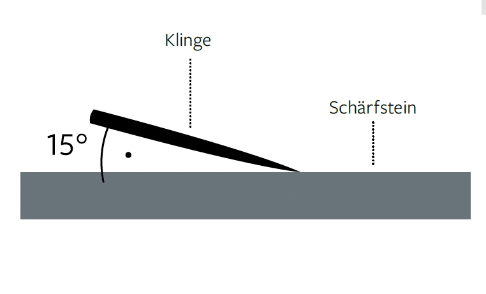
Examples of European kitchen knives that are typically sharpened at an angle of 15 degrees include:
- Chef’s knife – is a versatile kitchen knife that is used for slicing, chopping, and dicing meat, vegetables, and herbs; a sharpening angle of 15 degrees per side provides a sharp blade that is simultaneously robust enough to meet various demands.
- Carving Knife – This knife is used to slice meat into thin pieces, particularly roasts and poultry. A sharpening angle of 15 degrees on each side allows for precise and uniform cuts, crucial for an attractive presentation of the meat.
- Vegetable Knives – These knives are specially designed for cutting, peeling, and chopping vegetables. A sharpening angle of 15 degrees per side ensures a sharp blade that effortlessly slices through a variety of vegetable types. Simultaneously, it provides enough stability to handle harder vegetables as well.
In addition to the types of knives mentioned above, there are numerous other European knife types for which a 15-degree sharpening angle is ideal. Therefore, the Tyrolit Life knife sharpener is preset to this angle, allowing most of the cutting tools in the Tyrolean company’s knife set to be ideally sharpened.
10 to 15 degree sharpening angle for Japanese knives
For Japanese kitchen knives, a grinding angle between 10 and 15 degrees per side is usually considered ideal. These narrow sharpening angles are characteristic of Japanese knives and allow for an extremely sharp blade.
Examples of Japanese kitchen knives typically sharpened at a grinding angle between 10 and 15 degrees per side include:
- Santoku knife – an all-purpose knife used for cutting, dicing and chopping meat, fish and vegetables; the narrow grinding angle of 10 to 15 degrees per side gives the Santoku knife an extremely sharp blade that glides precisely and effortlessly through various foods.
- The Gyuto knife is similar to a European chef’s knife but features a slimmer blade and a sharper sharpening angle. It is especially well-suited for slicing meat and chopping herbs.
- Nakiri knife – a traditional Japanese vegetable knife with a straight blade and a slim shape.
Moreover, there are various specific sharpening techniques frequently applied to Japanese knives. These knives are sharpened in unique shapes, distinct from the traditional symmetrical sharpening seen in European kitchen knives. Covering all these techniques in detail would exceed the scope of this discussion; however, below are some of the more renowned sharpening shapes:
- Hollow sharpening – a concave cutting edge that makes the blade lighter and faster
- Flat grinding – a straight cutting edge suitable for precise cutting
- Cambered grind – a rounded cutting edge that is used for robust cutting and chopping
- Scandischliff – a simple and robust cutting angle, traditional for Nordic knives
- One-sided grinding – a cutting edge that is ground only on one side, for precise cutting and peeling
Sharpening serrated knives requires a delicate touch
Although most European kitchen knives can ideally be sharpened at a sharpening angle of 15 degrees per side, there are some special knife types for which exceptions must be made.
An example includes steak knives and bread knives. Although a sharpening angle of 15 degrees is considered ideal for these knives as well, they should, especially if they feature a serrated edge, be sharpened by a professional. This is because each serration must be individually sharpened to ensure even cutting performance. However, serrated blades are also notably durable, often lasting several years.
Sharpening angle for the European santoku knife – exceptions confirm the rule
Another special aspect regarding their sharpening angle is European santoku knives. This originally Japanese knife type has gained international popularity, leading to the development of a variant tailored to European preferences.
This is often also sharpened at a 15-degree angle to achieve optimum sharpness and performance. Therefore, the Tyrolit Santoku knife can also be sharpened ideally with the Tyrolit knife sharpener at a 15-degree angle.
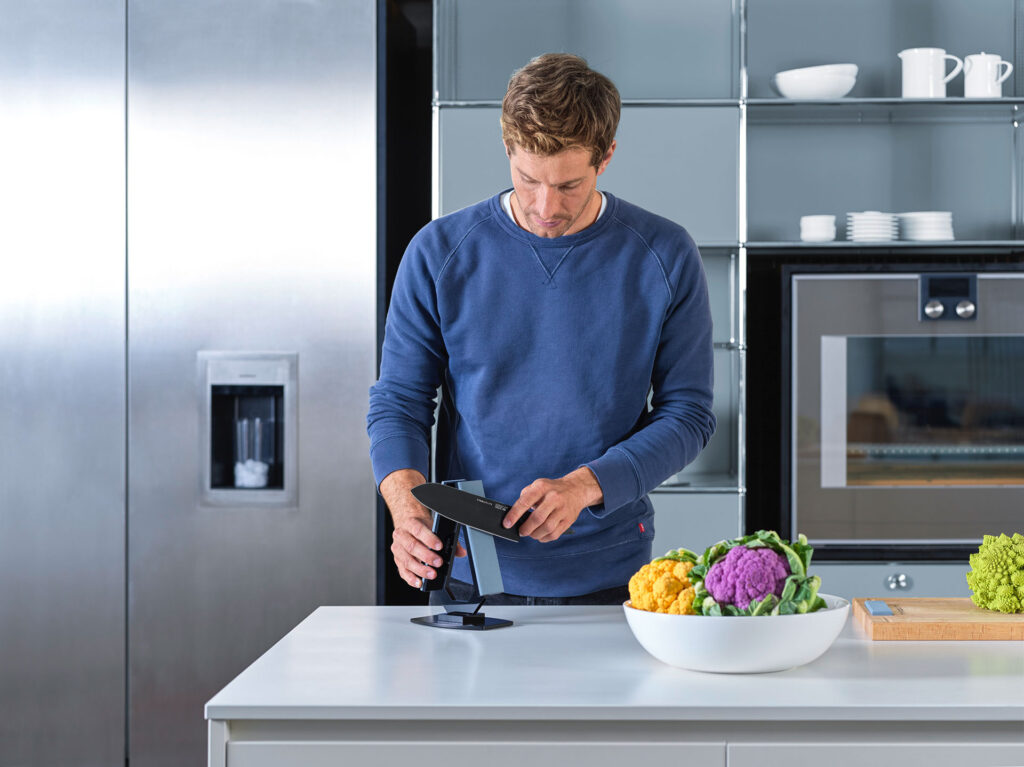
Sharpen kitchen knives yourself – comfort and precision with Tyrolit Life
Sharpening your own kitchen knives can be a pleasant and everyday process thanks to Tyrolit Life’s innovative solutions. With high-quality knife sharpeners, Tyrolit Life offers a way to sharpen your knives comfortably and effectively without relying on professional services.
The sharpening process with a Tyrolit Life knife sharpener is simple and uncomplicated: first, you prepare the sharpener by briefly moistening its ceramic whetstones under running water and setting it on a stable surface. Next, you guide the knife vertically over the sharpener or whetstone: the stones are aligned so that a 15-degree sharpening angle is automatically achieved. This makes the sharpener not only precise and efficient, but also easy for beginners to use.
Sharpen both sides of the blade evenly and select the appropriate grit for sharpening. Begin with a coarser grit (400) to restore the basic sharpening. Then switch to the finer 800 grit to complete the fine sharpening. Afterward, clean both the knife and sharpener under running water and store them dry and protected
With a Tyrolit Life knife sharpener, you get a reliable tool to sharpen your kitchen knives optimally at any time and without much effort. This allows you to ensure that your knives are always sharp and ready to handle your culinary creations with ease.
How to keep your kitchen knives sharp for longer
In order to ensure that your kitchen knives stay sharp for longer and retain their performance, use and storage also play a key role in addition to grinding. Tyrolit Life offers special solutions for this, such as the Tyrolit knife block and the Tyrolit cutting board – both contribute in different ways to keeping your knives sharp and ready for use.
The magnetic Tyrolit knife block provides a secure and practical storage solution for your kitchen knives. It can safely accommodate up to six knives, ensuring they are always within reach. Moreover, it promotes the gentle storage of your high-quality kitchen knives by preventing the blades from colliding with each other. Furthermore, the knife block features an integrated sharpening stone, enabling you to regularly and conveniently sharpen your knives without the need for additional devices.
The Tyrolit cutting board is also an excellent addition to your kitchen equipment. Made from high quality wood, the cutting board provides a gentle surface for your knife blades, minimising wear and damage. In addition, the cutting board is also equipped with an integrated sharpening stone, which allows you to sharpen your knives at any time – especially easy thanks to the preset 15-degree angle.
FAQs
At what angle do you sharpen kitchen knives?
What is the best way to sharpen kitchen knives?
At what angle are Japanese knives sharpened?
Sharpening and Grinding Knives – An Overview of the Best Methods
Knife sharpeners come into play when the blade of a knife gradually loses its sharpness. This occurs even with the highest quality knives, which need to be regularly honed and sharpened. Here, you will learn essential tips for maintaining sharp knives!

